Check out 151 Types of Flowers common in the US. This guide is great for picking and choosing your very own garden, or custom bouquet! Scroll through to find your perfect bloom.
—This post is courtesy of Proflowers.com. (Original publish date January 18, 2016), Shared with permission—
151 Types of Flowers Common In The U.S. & Their Characteristics
Spring is coming! Why not grow your own garden this year? Picking the right flowers can be overwhelming with hundreds of thousands to choose from. There are so many factors to consider including how much sun they need, when and where they grow best and even the type of soil required. That's why we are sharing this handy guide made by ProFlowers that includes all of that information and even special features like which are best for cut flowers. Scroll through to find your perfect bloom.
151 Types of Flowers
Aconite | Types of Flowers
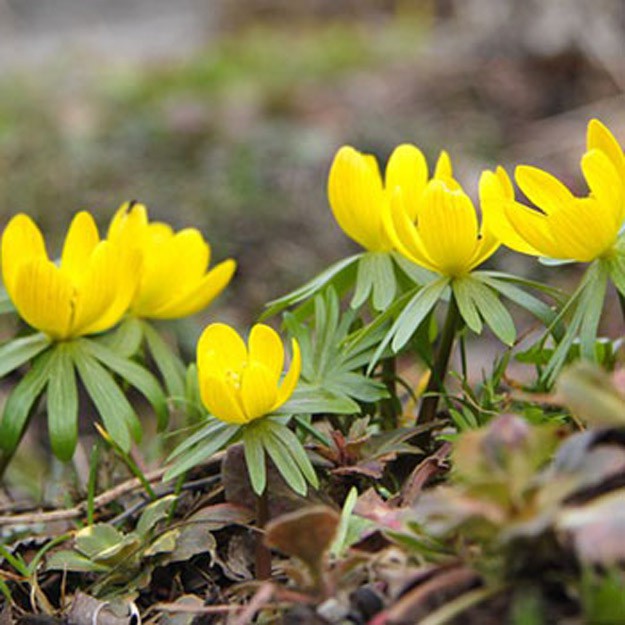
Aconites are one of the first bulb flowers to bloom in the spring and are known for their cheerful yellow color. Plant Aconites in a large group together and you'll be able to smell their sweet, honey-like fragrance.
Sun Needs: Partial Shade
Soil Needs: Well-drained
Zones: 4 – 9
Height: 0.25 – 0.5 feet
Blooms in: Early Spring
Features: Deer resistant
Ageratum | Types of Flowers

Also known as Flossflower, Ageratums come in blue, pink and white blooms. The taller varieties are best for cutting and displaying in your home, while the dwarf bedding varieties are best kept in the garden.
Sun Needs: Full Sun/Partial Shade
Soil Needs: Well-drained
Zones: 5 – 9
Height: 0.5 – 2 feet
Blooms in: Mid-Summer – Mid-Fall
Features: Good for cut flowers
Allium | Types of Flowers
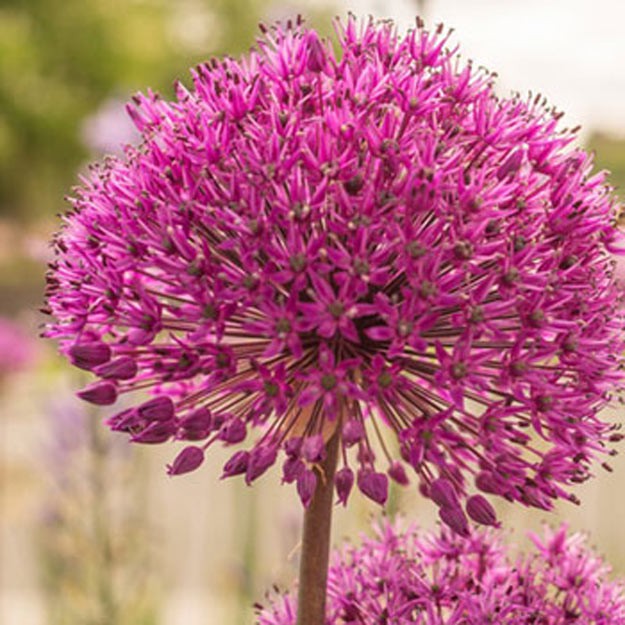
There are five varieties of the Allium, known primarily for their tall stems and large, spherical heads. Blooms are typically violet, but blue and pink varieties can also be found.
Sun Needs: Full Sun
Soil Needs: Well-drained
Zones: 3 – 10
Height: 1 – 6 feet
Blooms in: Late Spring – Mid-Summer
Features: Good for cut flowers
Anemone | Types of Flowers

The Anemone includes 120 species of flowers, but the most common types found in North America come in white, pink or violet hues. The Anemone is dainty and doesn't grow well during summer droughts, overly wet winters or high winds.
Sun Needs: Full Sun / Partial Shade
Soil Needs: Well-drained, High fertility
Zones: 3 – 9
Height: 2.5 – 5 feet
Blooms in: Mid Spring – Mid-Fall
Features: Deer resistant
Angelica | Types of Flowers
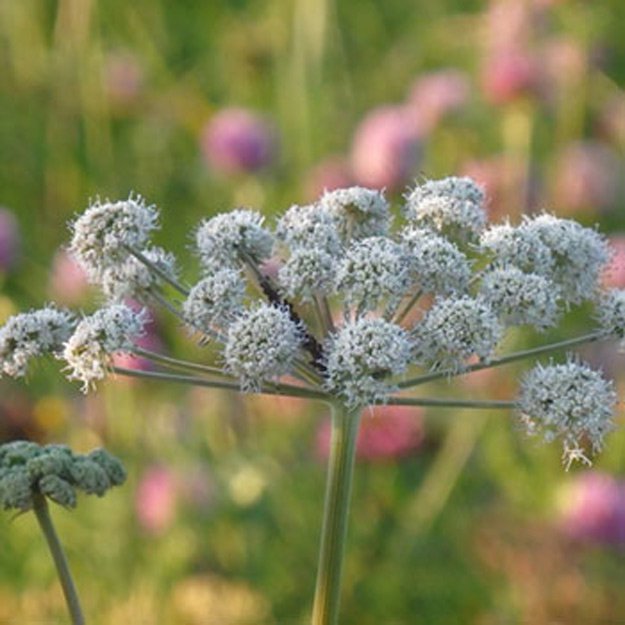
Commonly found in tea and herbal remedies, the stem of the Angelica can even be made into candy. With over 50 species, the Angelica is also good for bees and other pollinators. Known for their large starburst flowers, it comes in white or green.
Sun Needs: Partial Shade / Full Shade
Soil Needs: Well-drained, High fertility
Zones: 4 – 9
Height: 3 – 6 feet
Blooms in: Summer
Features: Deer resistant
Angelonia | Types of Flowers
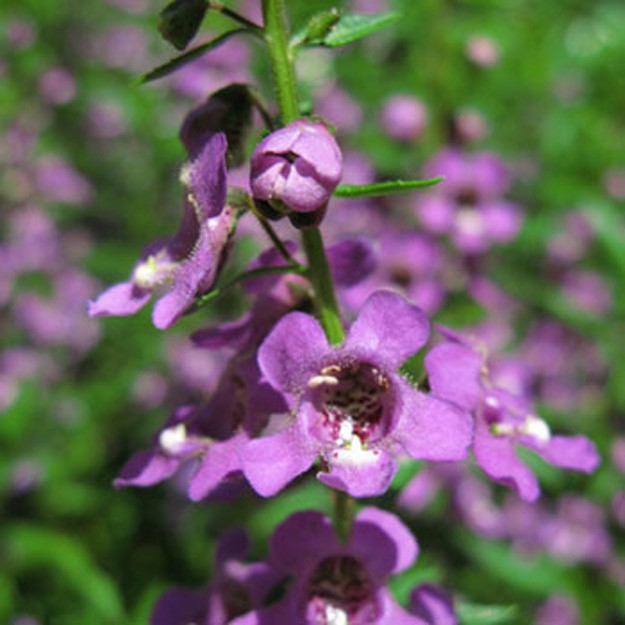
Especially good for container gardening, the Angelonia will keep blooming all summer even if old flowers are removed. Once tall enough to cut, bring them inside and you'll notice a light scent that some say is reminiscent of apples.
Sun Needs: Full Sun
Soil Needs: Damp
Zones: 9 – 11
Height: 2 – 3 feet
Blooms in: Mid-Summer – Mid-Fall
Features: Tolerates heat
Artemisia | Types of Flowers
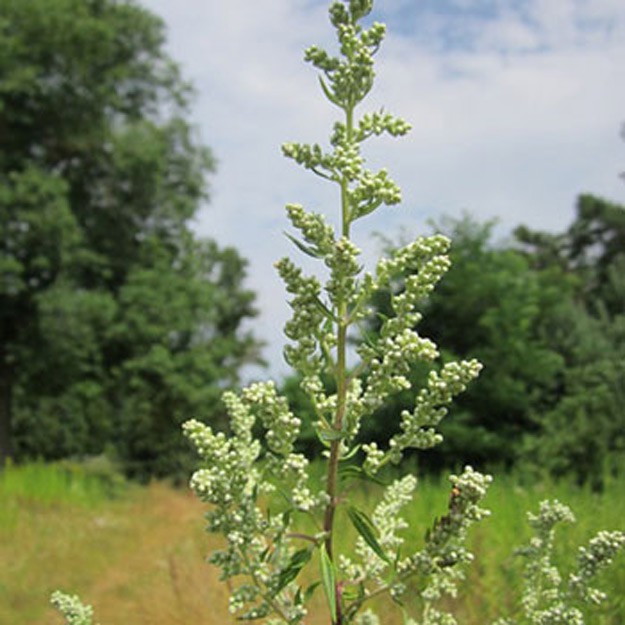
For those seeking a drought tolerant plant that doesn't make your yard look like a dessert, the Artemisia is for you. Tolerating low amounts of water, you can create a diverse xeriscape with this silvery flower.
Sun Needs: Full Sun
Soil Needs: Well-drained
Zones: 6 – 8
Height: 2 – 3 feet
Blooms in: Late Summer
Features: Non-invasive
Aster | Types of Flowers
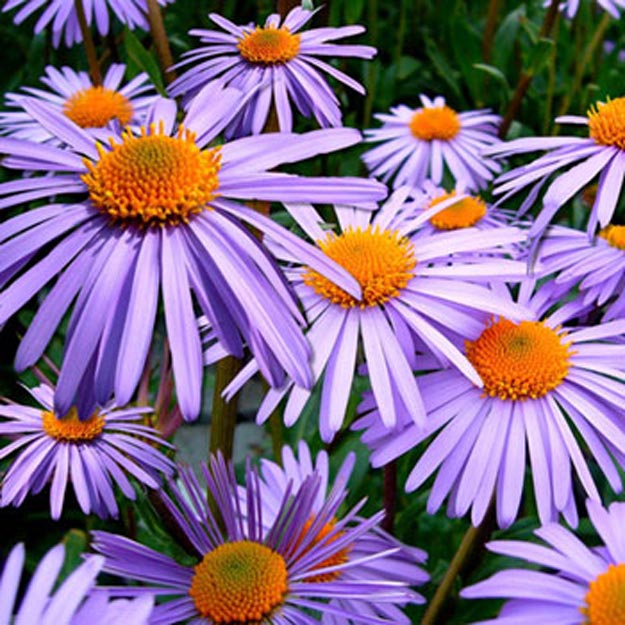
Named after the Latin word for “star,” Asters will brighten up any garden. It attracts butterflies and comes in a variety of colors including blue, indigo, violet, white, red and pink. Unlike other colorful flowers, Asters will typically stay in bloom into cooler fall months.
Sun Needs: Full Sun / Partial Shade
Soil Needs: Well-drained
Zones: 4 – 8
Height: 0.25 – 4 feet
Blooms in: Late Spring – Early Fall
Features: Good for cut flowers
Astilbe | Types of Flowers
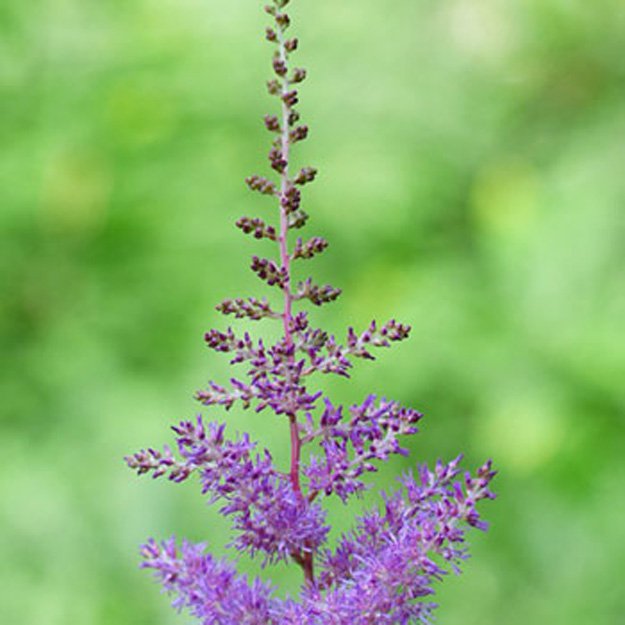
Astilbes are deceptively delicate with their long, fern-like flowers. These flowers can actually withstand damp soil and shade, while still growing between one to six feet tall. Perfect to add for a pop of color to a garden that typically gets little sunlight.
Sun Needs: Full Sun / Partial Shade
Soil Needs: Well-drained, High fertility
Zones: 4 – 9
Height: 1.5 – 6 feet
Blooms in: Late Spring – Early Fall
Features: Good for cut flowers
Aubrieta | Types of Flowers
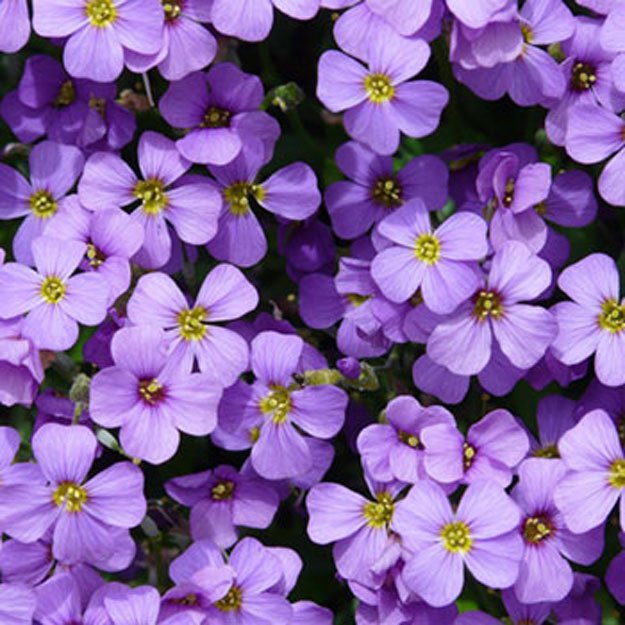
Named after Claude Aubriet, a French artist who famously painted them, Aubrietas spread low with small violet, pink or white flowers. If you're creating a rock garden, Aubrietas are ideal as it prefers sandy, well-drained soil.
Sun Needs: Full Sun
Soil Needs: Well-drained, High fertility
Zones: 4 – 9
Height: 0.5 – 0.75 feet
Blooms in: Mid-Spring – Early Summer
Features: Non-invasive
Azalea | Types of Flowers
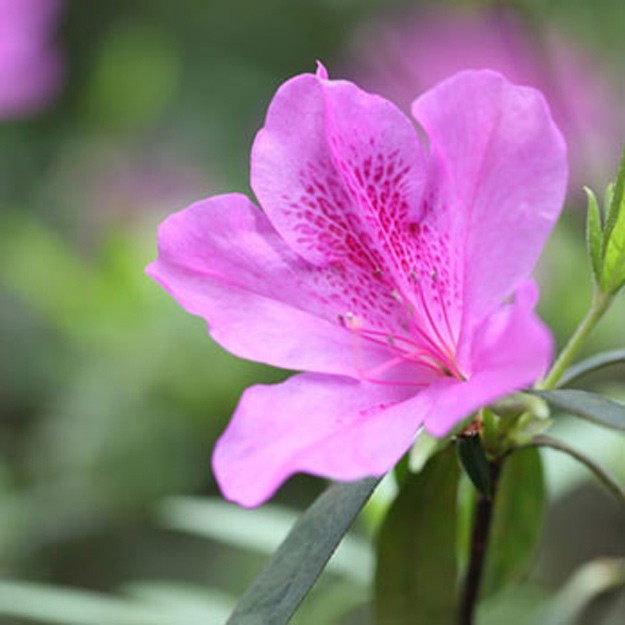
Often referred to as “the royalty of the garden,” these elegant flowers are known for their outstanding colors and foliage. With thousands of varieties to choose from, Azaleas require little maintenance once planted and can be brought inside to make a fabulous bouquet.
Sun Needs: Partial Shade
Soil Needs: Well-drained
Zones: 3 – 6
Height: 3 – 4 feet
Blooms in: Spring
Features: Good for cut flowers
Balloon Flower | Types of Flowers
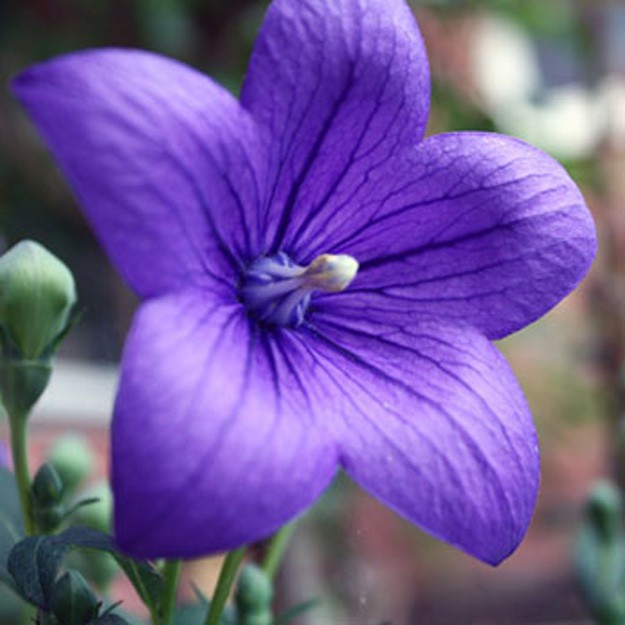
Balloon flowers start as hollow buds and, as it grows, eventually bursts open into a star-shaped flower. In addition to its beauty, Balloon flowers are resilient in the garden and can handle varying sunlight, water and soil.
Sun Needs: Full Sun / Partial Shade
Soil Needs: Well-drained
Zones: 4 – 9
Height: 2.5 – 3.5 feet
Blooms in: Summer
Features: Deer resistant
Balsam | Types of Flowers

Bring the tropics to your garden with a Balsam plant. Easy to care for, it thrives in shadier spots, can tolerate heat and handle damp soil. Flowers come in almost every color of the rainbow, including red, orange, yellow, violet, white and pink.
Sun Needs: Full Sun / Partial Shade
Soil Needs: Well-drained
Zones: 3 – 7
Height: 1 – 2.5 feet
Blooms in: Early Summer – Mid-Fall
Features: Tolerates heat
Baneberry | Types of Flowers

Perfect for cool, shaded spots, the Baneberry brings a holiday-inspired look to your garden. Before the Baneberry bears ornamental fruit, it features small white flowers. Beware though, the little red berries found on the plant are poisonous to eat!
Sun Needs: Full Sun / Partial Shade
Soil Needs: Well-drained
Zones: 3 – 9
Height: 1.5 – 3.5 feet
Blooms in: Late Spring
Features: Non-invasive
Basket of Gold | Types of Flowers
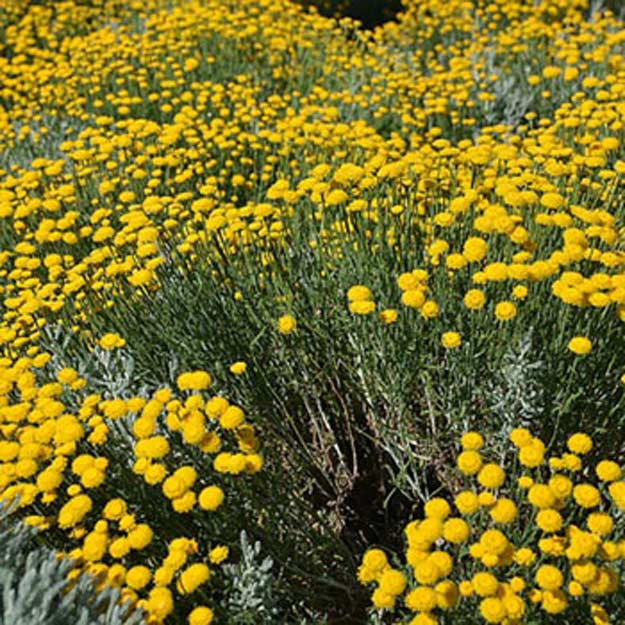
With bright yellow, low-growing flowers, no wonder where the Basket of Gold got its name. Given its short height and golden color, this makes for a perfect addition to a rock garden or xeriscape.
Sun Needs: Full Sun
Soil Needs: Well-drained
Zones: 4 – 8
Height: 0.5 – 0.75 feet
Blooms in: Late Spring – Early Summer
Features: Deer resistant
Bee Balm | Types of Flowers
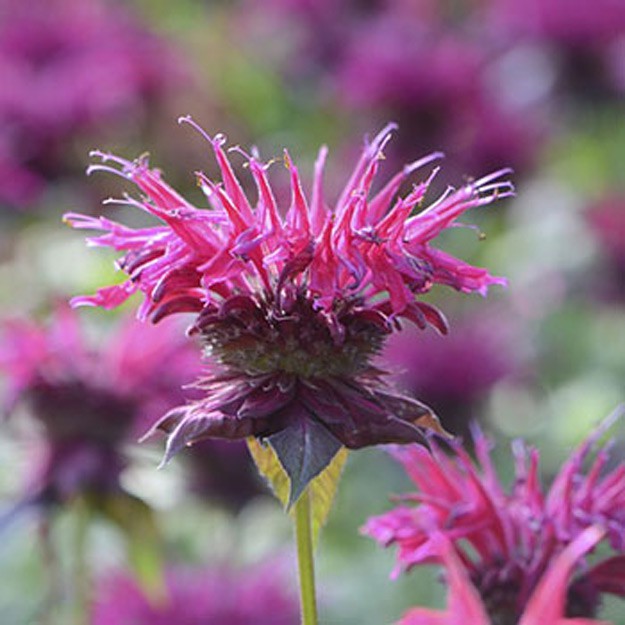
With the name Bee balm, this ornamental flower attracts not only bees, but hummingbirds and other beneficial pollinators. Bee balms are highly valued for their deep scarlet color, but also come in blue, violet, white and pink.
Sun Needs: Full Sun / Partial Shade
Soil Needs: Damp
Zones: 4 – 9
Height: 2 – 4 feet
Blooms in: Mid-Summer – Late Summer
Features: Attracts bees, butterflies
Begonia | Types of Flowers
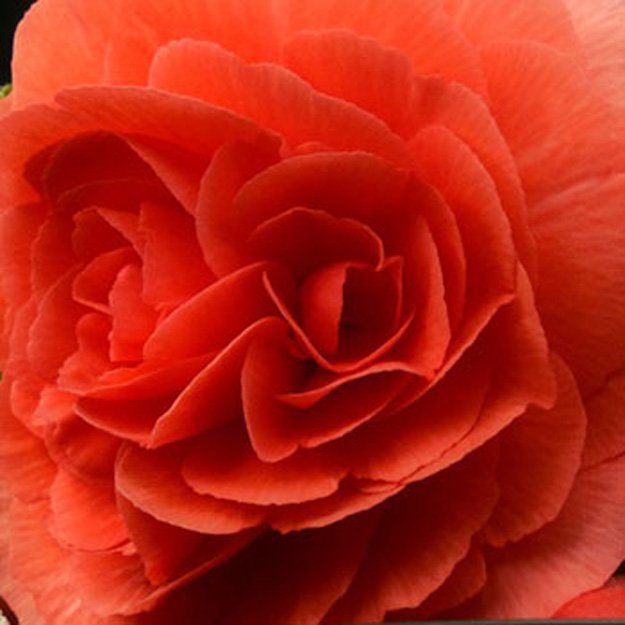
Known for their attractive blooms, the Begonia is a timeless favorite among gardeners. Consisting of more than 1,700 specie, Begonias also make for good indoor plants if kept by a sunny window and watered regularly.
Sun Needs: Full Sun / Partial Shade
Soil Needs: Well-drained
Zones: 8 – 10
Height: 0.5 – 1.5 feet
Blooms in: Late Spring – Early Fall
Features: Deer resistant
Bellflower | Types of Flowers
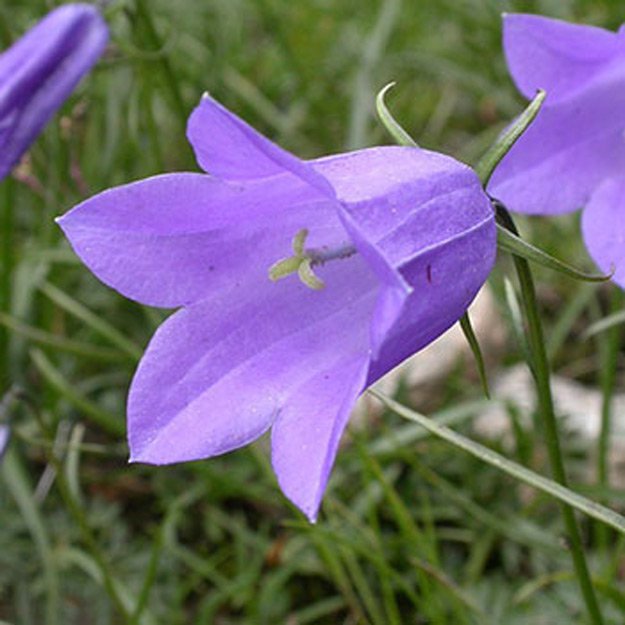
With their happy, star-like flowers, the variety of Bellflowers available can fit any gardener's needs. Ranging from short to tall, and featuring almost every color of the rainbow, these cheery flowers are a great fit for your garden or cut to display in your home.
Sun Needs: Full Sun / Partial Shade
Soil Needs: Well-drained
Zones: 3 – 8
Height: 0.25 – 4 feet
Blooms in: Early Summer – Early Fall
Features: Good for cut flowers
Bergenia | Types of Flowers

The Bergenia plant looks as sweet as its nicknames—also commonly known as Pigsqueak or Elephant's ears. While short in stature, the Bergenia makes up for it in ornate flowers and leaves that change from green to red or bronze in the cooler months.
Sun Needs: Full Sun / Partial Shade
Soil Needs: Damp
Zones: 3 – 8
Height: 1 – 2 feet
Blooms in: Spring
Features: Deer resistant
Blackeyed Susan | Types of Flowers
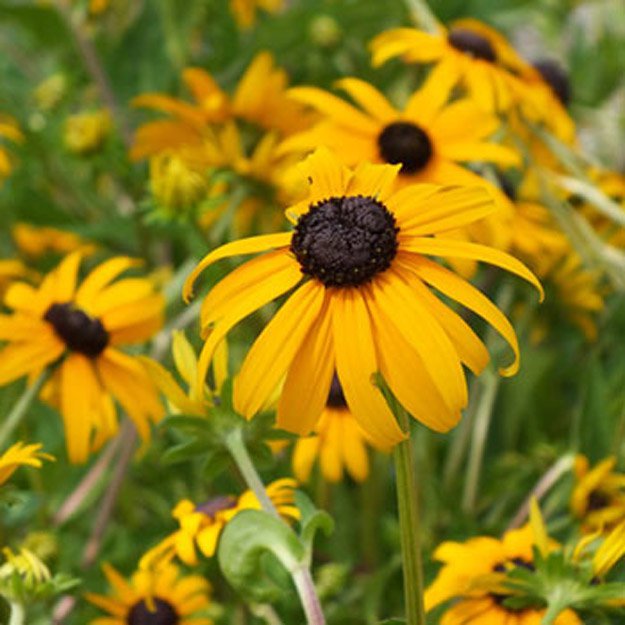
Known as the official flower for the Preakness, Blackeyed Susans are a member of the sunflower family. In addition to making a beautiful indoor flower arrangement, Blackeyed Susans attract butterflies, bees and other beneficial insects.
Sun Needs: Full Sun
Soil Needs: Well-drained
Zones: 3 – 9
Height: 1 – 3 feet
Blooms in: Late Summer – Mid-Fall
Features: Good for cut flowers
Bleeding Heart | Types of Flowers
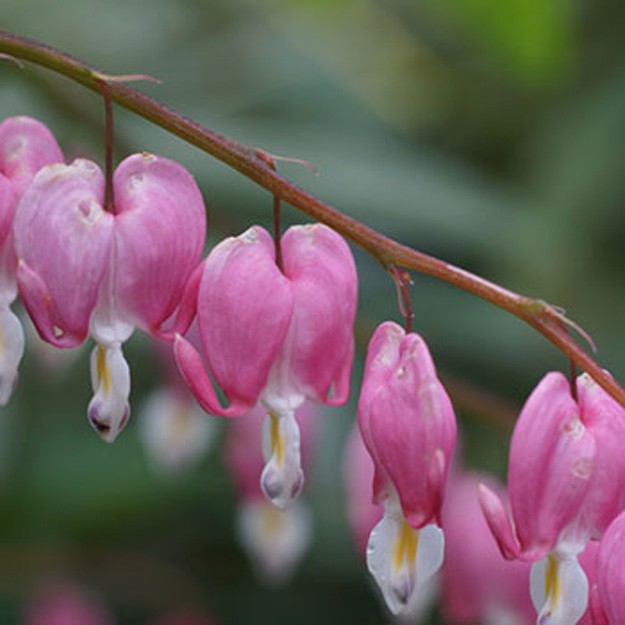
The Bleeding Heart's appearance is as equally dramatic as its name, bearing heart shaped flowers that hang from a long stem. It also makes for an exquisite cut flower to display in your home.
Sun Needs: Partial Shade
Soil Needs: Well-drained, Damp
Zones: 3 – 9
Height: 1.5 – 4 feet
Blooms in: Late Spring – Early Summer
Features: Good for cut flowers
Bloodroot | Types of Flowers
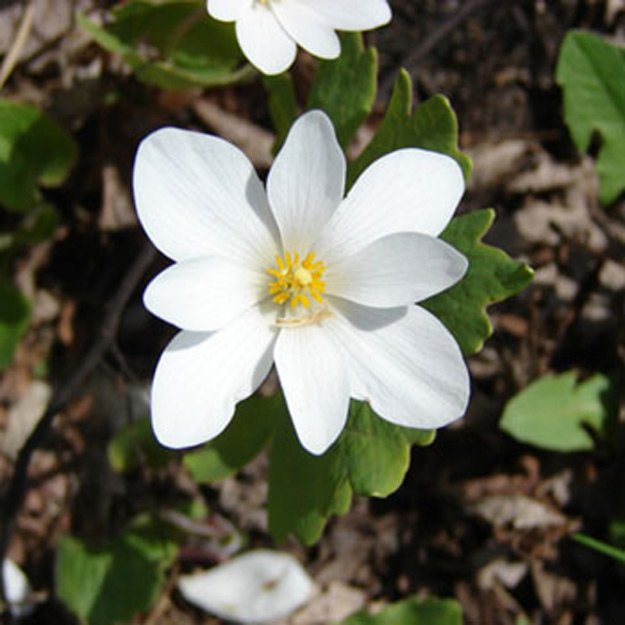
This flower gets its name from the bright red poisonous sap if you cut into the stem, but on the outside the Bloodroot makes for a great addition to a shaded garden. In addition to a bright white flower, the leaves are scalloped to create an elegant package.
Sun Needs: Partial Shade / Full Shade
Soil Needs: Well-drained
Zones: 3 – 9
Height: 0.25 – 0.75 feet
Blooms in: Early Spring
Features: Non-invasive
Boneset | Types of Flowers
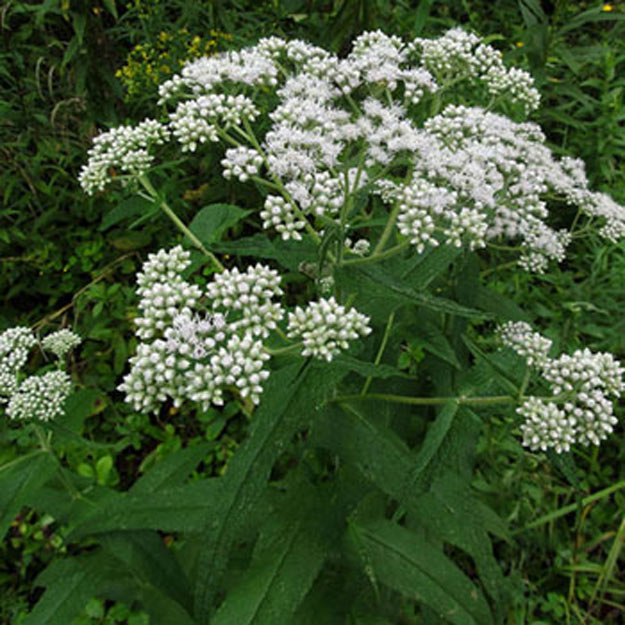
The Boneset is a wildflower that is easy to grow in most soil types, but watch out as it can pose a management problem and spread quickly. Well-suited for more natural looking gardens, the Boneset is also a friend among bees and butterflies.
Sun Needs: Full Sun / Partial Shade
Soil Needs: Well-drained
Zones: 4 – 9
Height: 3 – 5 feet
Blooms in: Late Summer – Mid-Fall
Features: Attracts bees, butterflies
Browallia | Types of Flowers

The Browallia will grow in the darkest corners of your garden, preferring full shade and protection from the hot sun. It also makes for a great indoor plant during the summer as long as it's kept damp but not wet.
Sun Needs: Partial Shade / Full Shade
Soil Needs: Well-drained
Zones: 2 – 11
Height: 1 – 2 feet
Blooms in: Mid-Summer – Late Summer
Features: Attracts hummingbirds
Bugleweed | Types of Flowers
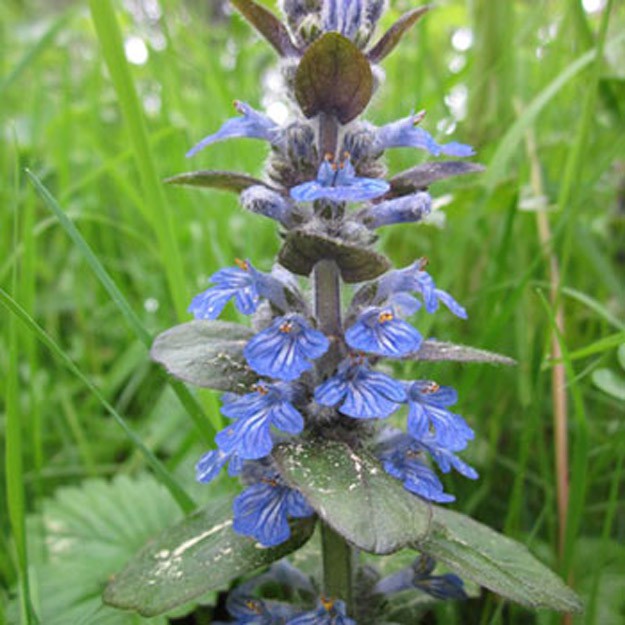
Bugleweed is a popular choice to fill a garden with low, colorful greenery, but be sure to maintain it as it can easily spread and take over your garden. Most prefer shade, but if your Bugleweed variety has purple leaves, it'll do well in heat.
Sun Needs: Partial Shade / Full Shade
Soil Needs: Well-drained
Zones: 3 – 9
Height: 0.25 – 0.5 feet
Blooms in: Late Spring – Early Summer
Features: Tolerates heat
Bugloss | Types of Flowers
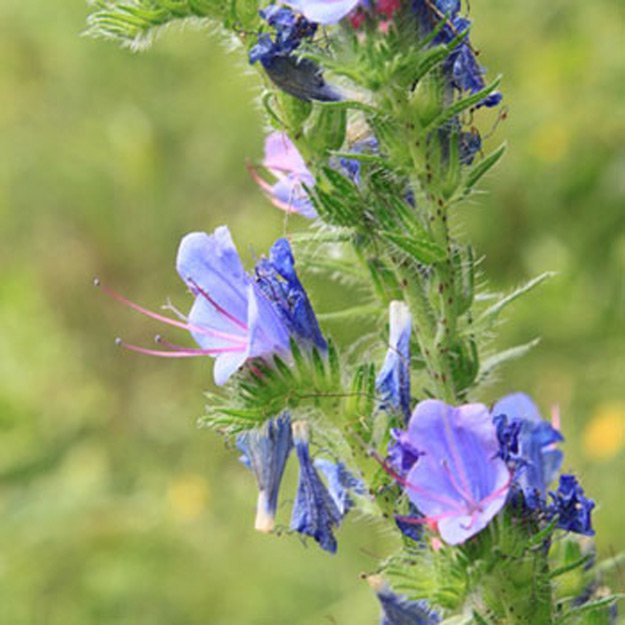
Given it's tall height, attractive blooms and unalluring foliage, the Bugloss is often grown as accent border plants. This biennial is short lived and doesn't do well with excess moisture.
Sun Needs: All Sun Types
Soil Needs: Well-drained
Zones: 3 – 8
Height: 3 – 5 feet
Blooms in: Summer
Features: Non-invasive
Buttercup | Types of Flowers

Who hasn't held a buttercup up to their chin to see it reflect its golden yellow shade? This cheerful plant is a favorite, but requires regular maintenance to keep it from spreading.
Sun Needs: Full Sun / Partial Shade
Soil Needs: Well-drained
Zones: 3 – 8
Height: 1 – 2 feet
Blooms in: Late Spring – Early Summer
Features: Non-invasive
Butterfly Weed | Types of Flowers
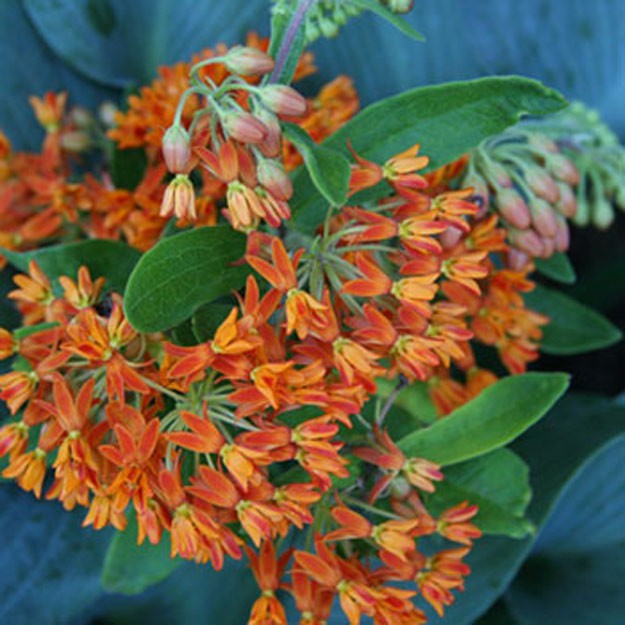
The aptly named Butterfly Weed is a favorite among butterflies, but also bees and other beneficial insects. Propagation may take some time, but once the Butterfly Weed starts growing this hardy plant can endure full sun and a variety of soil types.
Sun Needs: Full Sun
Soil Needs: Well-drained
Zones: 4 – 9
Height: 2 – 3 feet
Blooms in: Mid-Summer – Early Fall
Features: Good for cut flowers
Caladium | Types of Flowers
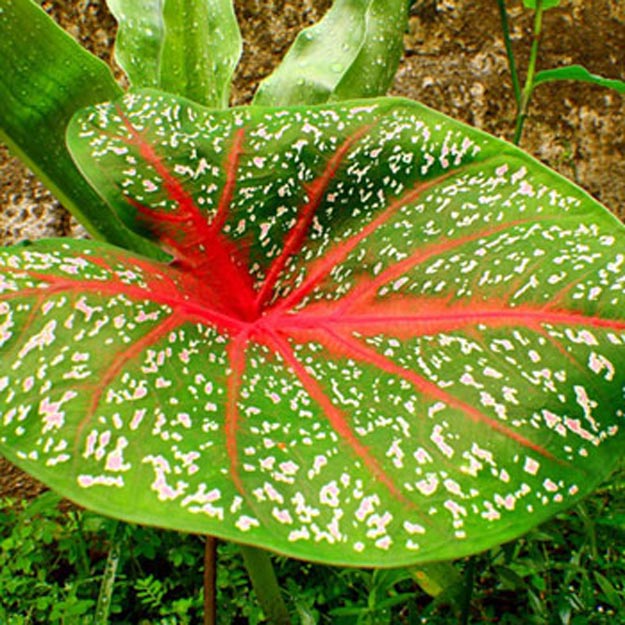
Caladiums are known for their heart or arrow shaped leaves and are a good addition to a garden needing some dramatic foliage. In addition to green, leaves are known to include hues of red, white, maroon, pink and cream.
Sun Needs: Partial Shade / Full Shade
Soil Needs: Well-drained, Damp
Zones: 10 – 11
Height: 1 – 2 feet
Blooms in: Early Spring – Mid-Fall
Features: Non-invasive
Calendula | Types of Flowers
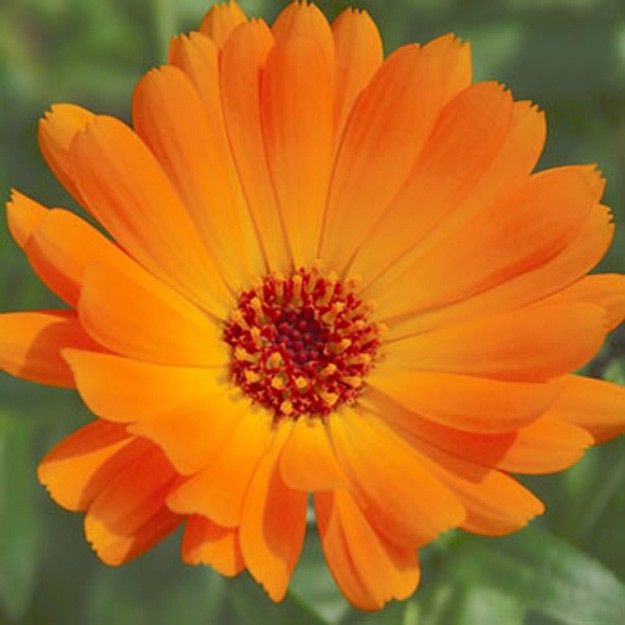
Add a pop of color to your garden with the garden-friendly Calendula. This flower tolerates the cooler months and is even edible—it's spicy leaves are often found as a garnish in salads and soups.
Sun Needs: Full Sun / Partial Shade
Soil Needs: Well-drained
Zones: 9 – 11
Height: 1 – 2 feet
Blooms in: Late Spring – Mid-Fall
Features: Good for cut flowers
California Poppy | Types of Flowers

The California poppy is ideal for gardens in dry, sandy areas with full sun. Coming in a variety of colors including red, orange, yellow, white and pink, be sure to cut this wildflower to display inside.
Sun Needs: Full Sun
Soil Needs: Well-drained
Zones: 5 – 10
Height: 0.5 – 1 feet
Blooms in: Early Summer – Mid-Fall
Features: Good for cut flowers
Canterbury Bells | Types of Flowers
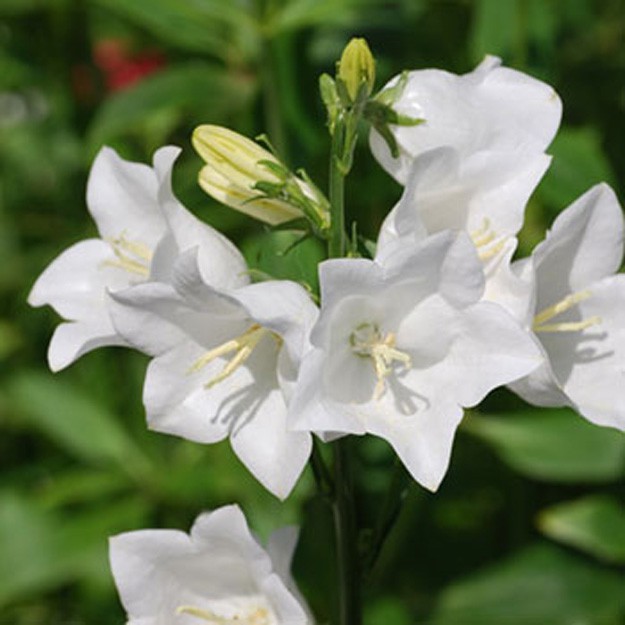
Reminiscent of an old English cottage, Canterbury Bells represent gratitude and faith. Their charming violet bells make for a beautiful bouquet.
Sun Needs: Full Sun / Partial Shade
Soil Needs: Well-drained
Zones: 5 – 8
Height: 1.5 – 3 feet
Blooms in: Late Spring – Mid-Summer
Features: Good for cut flowers
Cardinal Flower | Types of Flowers

Recognized for its deep scarlet red blooms, the Cardinal flower grows as high as 4 feet and attract beneficial insects like butterflies. While once in bloom the results are dazzling, this perennial's lifecycle is short lived.
Sun Needs: Partial Shade
Soil Needs: Damp
Zones: 2 – 9
Height: 3 – 4 feet
Blooms in: Mid-Summer – Early Fall
Features: Attracts butterflies
Carnation | Types of Flowers
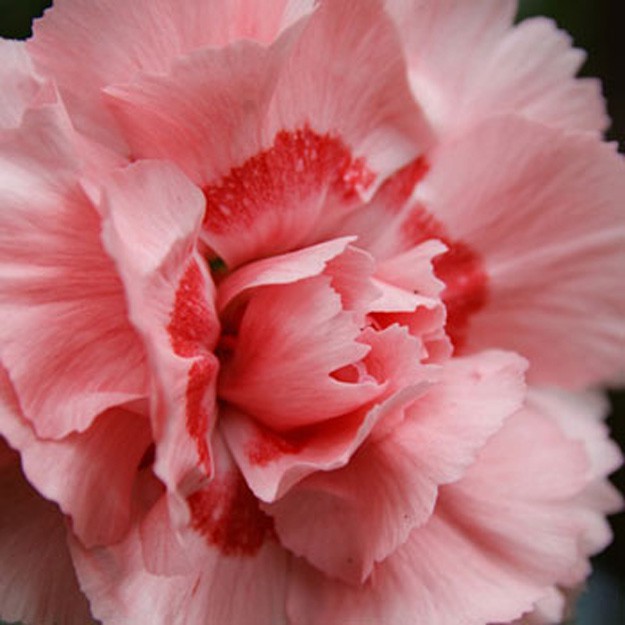
The bright cluster of petals make the Carnation a playful choice for any garden or bouquet. Depending on the color you pick, a Carnation can be used as a symbol of friendship, love or fascination.
Sun Needs: Full Sun
Soil Needs: Well-drained
Zones: 3 – 8
Height: 1.5 – 2 feet
Blooms in: Early Spring – Late Summer
Features: Good for cut flowers
Castor Bean | Types of Flowers
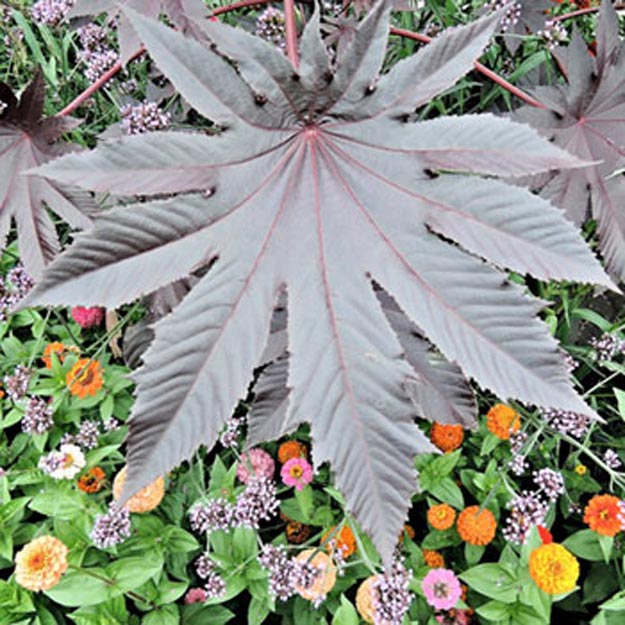
This massive plant—known to grow up to 10 feet tall—is a good addition if you're looking to add height or a backdrop for smaller plants. Watch out, the seeds, leaves and stem are poisonous!
Sun Needs: Full Sun
Soil Needs: Well-drained
Zones: 8 – 10
Height: 4 – 10 feet
Blooms in: Mid-Summer – Late Summer
Features: Deer resistant
Catmint | Types of Flowers
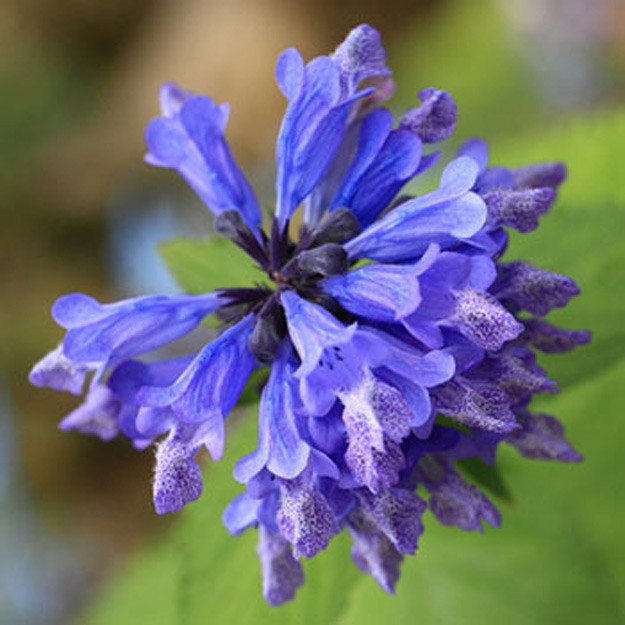
Cat owners rejoice! This popular feline plant's grey-green leaves and lavender flowers make a beautiful garden addition. It's also easy to care for, tolerating drier climates and full sun.
Sun Needs: Full Sun / Partial Shade
Soil Needs: Dry
Zones: 3 – 8
Height: 1 – 2 feet
Blooms in: Early Summer – Early Fall
Features: Attracts beneficial insects
Celosia | Types of Flowers

These ornamental plants get their name from the Greek word keleos, meaning “burned.” Their flame-like flower heads come in a variety of colors, including red, orange, yellow, violet, white and pink.
Sun Needs: Full Sun / Partial Shade
Soil Needs: Well-drained, High fertility
Zones: 2 – 11
Height: 0.5 – 3 feet
Blooms in: Mid-Summer – Mid-Fall
Features: Good for cut flowers
Chives | Types of Flowers

While this herb may be best known sprinkled over potatoes, Chives' pink flowers also make for an attractive edging for flower gardens. Fairly tolerant of many soil types, Chives are easy to care for.
Sun Needs: Full Sun / Partial Shade
Soil Needs: Well-drained
Zones: 3 – 9
Height: 0.5 – 1 foot
Blooms in: Late Spring – Early Fall
Features: Good for cut flowers
Chrysanthemum | Types of Flowers
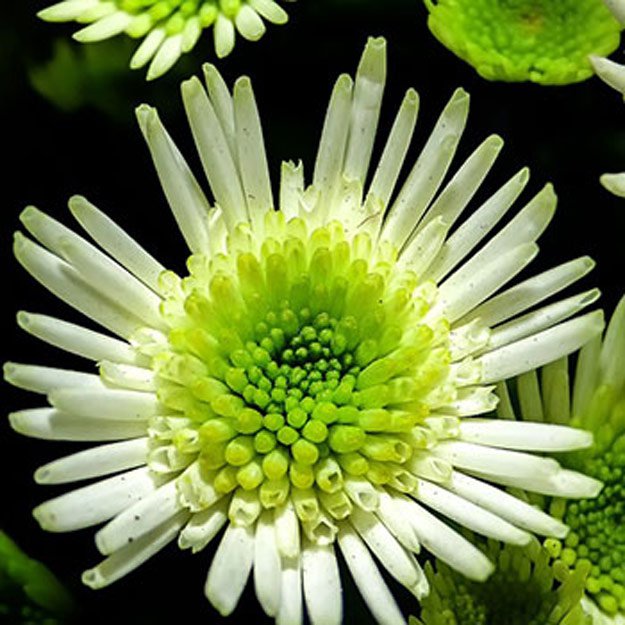
The name Chrysanthemum comes from the Greek words for “gold” and “flower,” but come in a variety of colors besides yellow. With vibrant hues of white, yellow, red and pink, the Chrysanthemum features decorative pompom tops that can be beautifully displayed indoors.
Sun Needs: Full Sun / Partial Shade
Soil Needs: Well-drained
Zones: 3 – 9
Height: 1 – 3 feet
Blooms in: Mid-Summer – Late Fall
Features: Good for cut flowers
Clary Sage | Types of Flowers

This annual comes in violet, white or pink and thrives in outdoor containers. As their bloom season comes to an end, you can either cut them to display proudly in your home or dry them as keepsakes.
Sun Needs: Full Sun / Partial Shade
Soil Needs: Well-drained
Zones: 5 – 11
Height: 1.5 – 3 feet
Blooms in: Late Spring – Mid-Fall
Features: Good for cut flowers
Cleome | Types of Flowers

Also known as spider flower for its lacy foliage, the Cleome quickly fills any spare space in a garden. Deer resistant and drought tolerant, Cleomes also attract butterflies and hummingbirds.
Sun Needs: Full Sun / Partial Shade
Soil Needs: Well-drained
Zones: 4 – 11
Height: 3 – 5 feet
Blooms in: Mid-Summer – Early Fall
Features: Good for cut flowers
Coleus | Types of Flowers
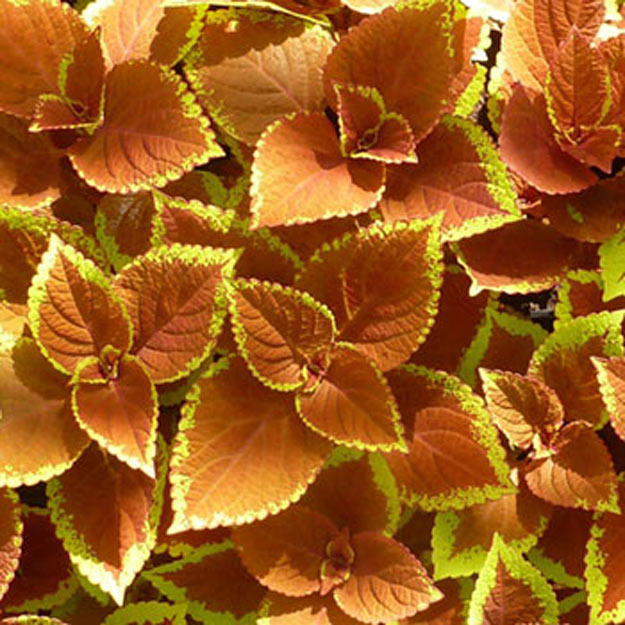
This shade tolerant annual is known for its boldly patterned leaves and makes for a great border along gardens. Depending on the specie, the Coleus' leaves can come in shades of red, pink, orange, yellow, green, purple or white.
Sun Needs: Partial Shade
Soil Needs: Well-drained
Zones: 2 – 11
Height: 0.5 – 3 feet
Blooms in: Mid-Summer – Late Summer
Features: Non-invasive
Columbine | Types of Flowers
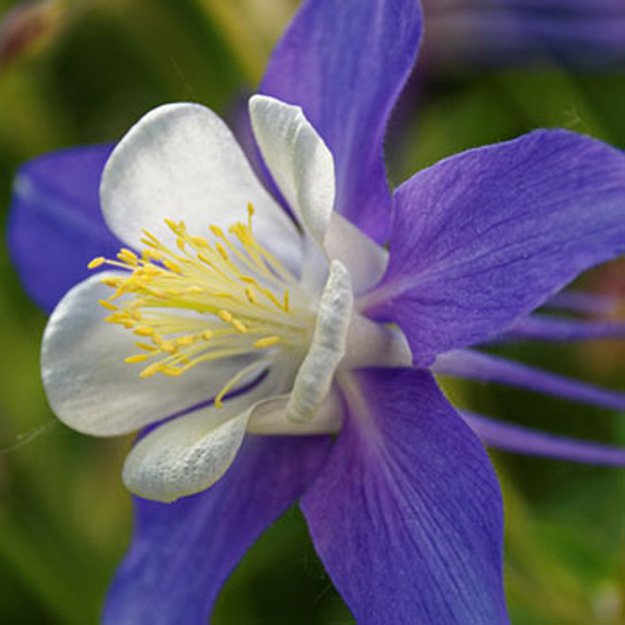
Also known as Granny's Bonnet, the name Columbine comes from the Latin word “dove” because the shape of the inverted flower resembles doves clustered together. The Columbine is also a major source of food for a species of bumblebee call the Bombus hortorum.
Sun Needs: Full Sun / Partial Shade
Soil Needs: Well-drained
Zones: 3 – 8
Height: 1.5 – 3 feet
Blooms in: Mid-Spring – Early Summer
Features: Good for cut flowers
Comfrey | Types of Flowers
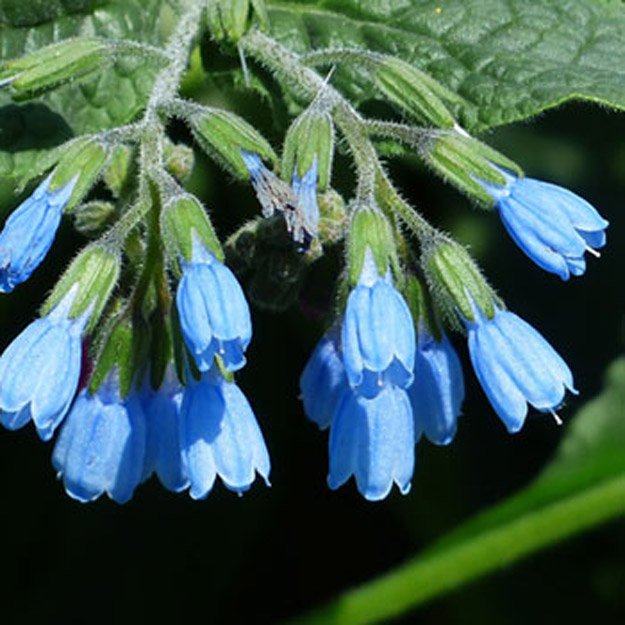
In addition to making a great garden, the Comfrey has topical medicinal and herbal uses. Comfreys like moist, somewhat shady locations and freely self-flowers, so it's more suited for ornamental plantings.
Sun Needs: Full Sun / Partial Shade
Soil Needs: Damp
Zones: 3 – 9
Height: 1 – 5 feet
Blooms in: Late Spring – Early Summer
Features: Non-invasive
Coneflower | Types of Flowers
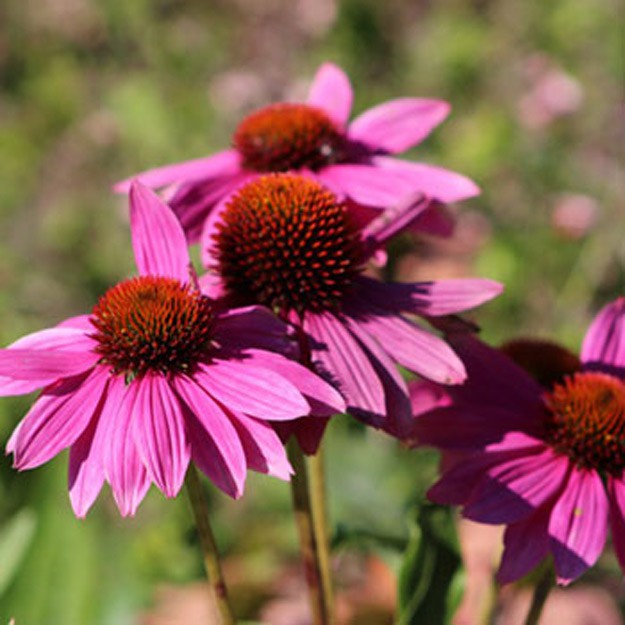
A member of the daisy family, the Coneflower features rich hues of violet, white and pink. These easy to grow flowers are heat and drought tolerant, and make for a wild bouquet once cut.
Sun Needs: Full Sun
Soil Needs: Well-drained
Zones: 3 – 9
Height: 1.5 – 5 feet
Blooms in: Mid-Summer – Early Fall
Features: Good for cut flowers
Coreopsis | Types of Flowers
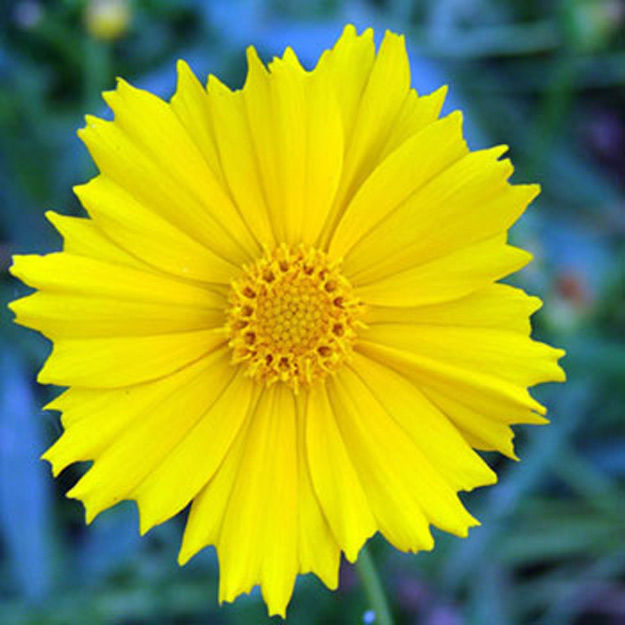
Looking for a wildflower that's more manageable than the tall sunflowers? Look no further than the Coreopsis. With down by the prairie charm, the Coreopsis blooms brightly with shades of yellow, red and orange.
Sun Needs: Full Sun / Partial Shade
Soil Needs: Well-drained
Zones: 3 – 9
Height: 1 – 3 feet
Blooms in: Late Summer – Mid-Fall
Features: Good for cut flowers
Corydalis | Types of Flowers

From the Greek word “crested lark,” the Corydalis is not for the novice gardener. Hardy to very few zones (mostly zone 5), the Corydalis bloom season is short-lived with the right combination of sun, moisture and drainage.
Sun Needs: Partial Shade / Full Shade
Soil Needs: Well-drained
Zones: 5 – 7
Height: 1 – 1.5 feet
Blooms in: Early Summer – Early Fall
Features: Deer resistant
Cosmos | Types of Flowers
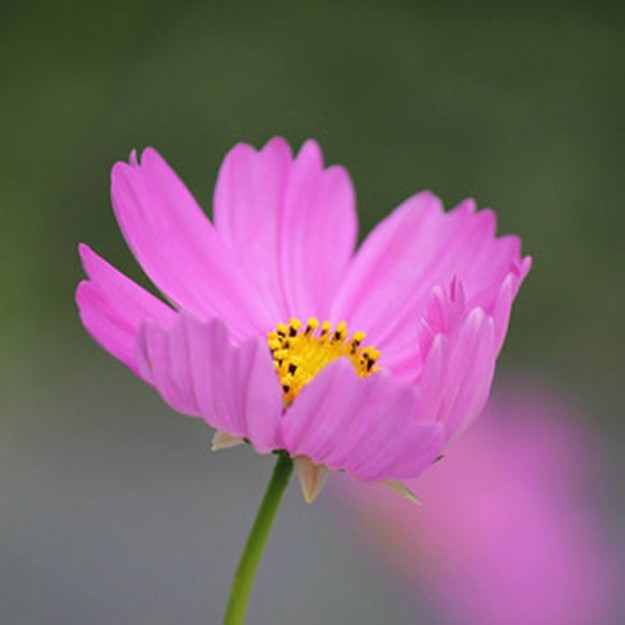
Hailing from the sunflower family, the Cosmos are beautiful wildflowers that bloom in shades of red, orange, yellow, violet, pink and white. Growing up to 6 feet tall, this flower makes for an excellent addition to a bouquet.
Sun Needs: Full Sun / Partial Shade
Soil Needs: Well-drained
Zones: 2 – 11
Height: 1 – 6 feet
Blooms in: Mid-Summer – Mid-Fall
Features: Good for cut flowers
Crocus | Types of Flowers

The cup-shaped Crocus blooms vary widely in color, often seen in shades of orange, yellow, violet or white. Their ease of care make for great outdoor containers, but they also excel indoors as a houseplant.
Sun Needs: Full Sun / Partial Shade
Soil Needs: Well-drained
Zones: 3 – 8
Height: 02.5 – 0.3 feet
Blooms in: Early Spring
Features: Non-invasive
Crown Imperial | Types of Flowers
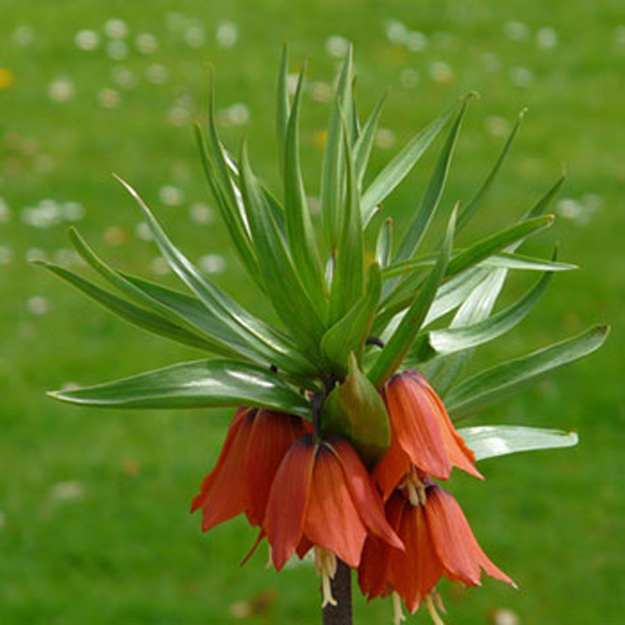
As majestic as its name, the Crown Imperial features one tall stem with a loop of tubular blooms. Blooms are commonly found in red, yellow or orange and will last longer if planted on its side so as to avoid rot.
Sun Needs: Full Sun
Soil Needs: Well-drained
Zones: 5 – 9
Height: 2 – 3 feet
Blooms in: Mid-Spring
Features: Deer resistant
Cushion Spurge | Types of Flowers

The drought tolerant Cushion Spurge actually get their bright yellow color not from the flower, but floral bracts found underneath. Foliage can also range in color, from green to purple to red.
Sun Needs: Full Sun
Soil Needs: Well-drained
Zones: 4 – 8
Height: 1 – 1.5 feet
Blooms in: Mid-Spring – Late Summer
Features: Non-invasive
Cyclamen | Types of Flowers
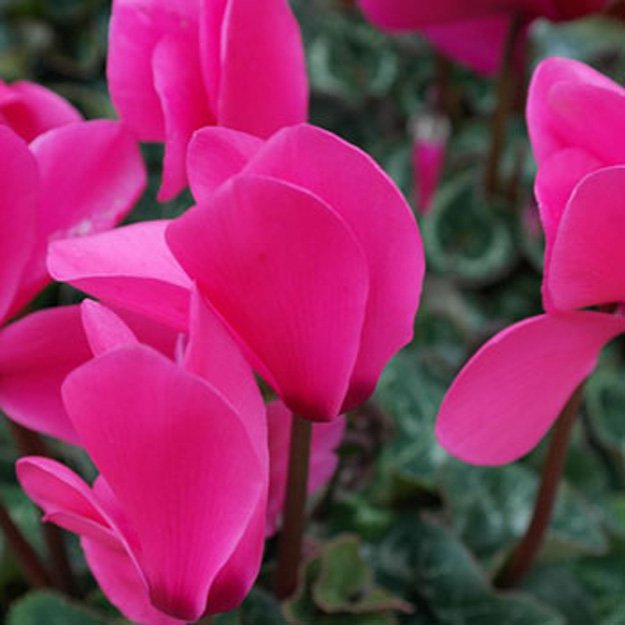
With its glossy, heart-shaped laves, the Cyclamen is a darling perennial. The Cyclamen is also a popular food source for a variety of insects and animals, from caterpillars to pigs.
Sun Needs: Partial Shade
Soil Needs: Well-drained
Zones: 5 – 9
Height: 0.25 – 0.5 feet
Blooms in: Early Spring
Features: Non-invasive
Daffodil | Types of Flowers

One of the most recognizable perennials, you know its spring time once a Daffodil is in bloom. Their iconic trumpet flowers typically come in yellow, but are also grown with red, orange, yellow, white and even pink blossoms.
Sun Needs: Full Sun
Soil Needs: Well-drained
Zones: 3 – 9
Height: 0.25 – 2 feet
Blooms in: Spring
Features: Good for cut flowers
Dahlia | Types of Flowers
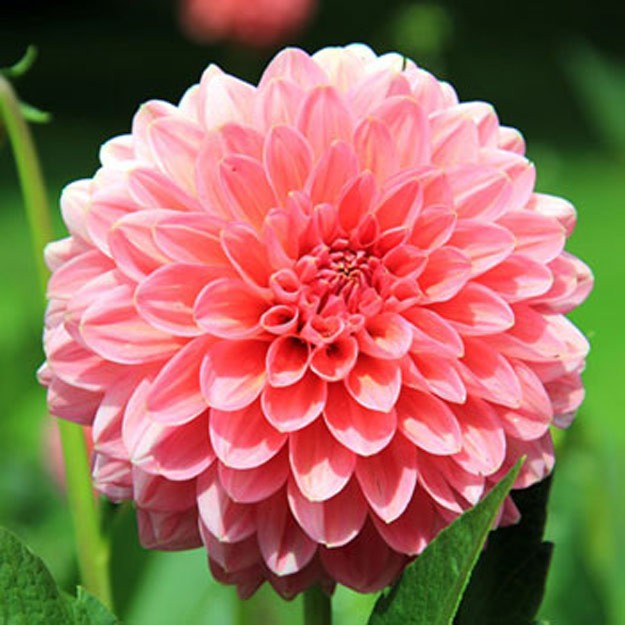
There are 42 species of Dahlia, but most popular versions are known for its bushy, tuberous flower. Dahlias can be difficult to grow, requiring well-drained soil and full sun, but the payoff is great with a colorful garden ranging in hues from red to violet to pink.
Sun Needs: Full Sun
Soil Needs: Well-drained
Zones: 8 – 10
Height: 2.5 – 5.5 feet
Blooms in: Mid-Summer – Early Fall
Features: Good for cut flowers
Daisy | Types of Flowers

The iconic, playful daisy is most recognized for its bright yellow center and white petals. Daisies are easy to grow and not fussy when it comes to soil types, although it does thrive in full sun.
Sun Needs: Full Sun
Soil Needs: Well-drained
Zones: 2 – 11
Height: 0.8 – 3 feet
Blooms in: Mid-Summer – Early Fall
Features: Good for cut flowers
Dame’s Rocket | Types of Flowers
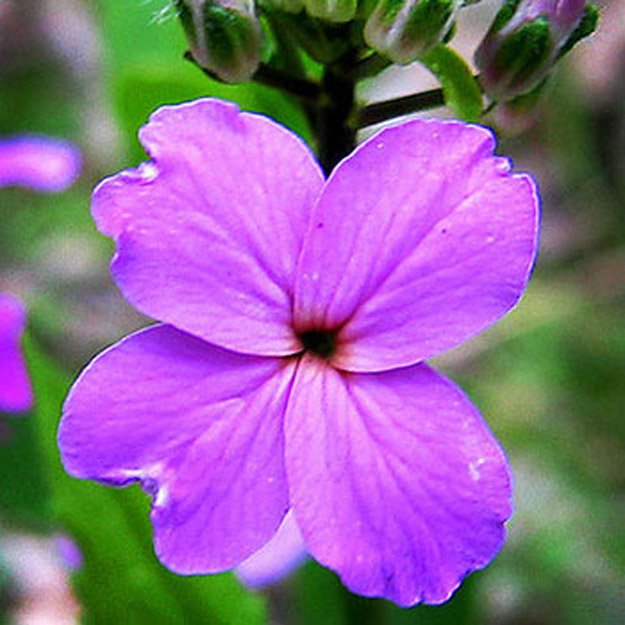
Dame’s Rocket is an aggressive growing biennial and is known to attract moths. Commonly found in white or violet, Dame's Rocket spread particularly quickly in rich, wet soil.
Sun Needs: Full Sun / Partial Shade
Soil Needs: Well-drained
Zones: 4 – 9
Height: 2 – 3 feet
Blooms in: Late Spring – Early Summer
Features: Good for cut flowers
Delphinium | Types of Flowers
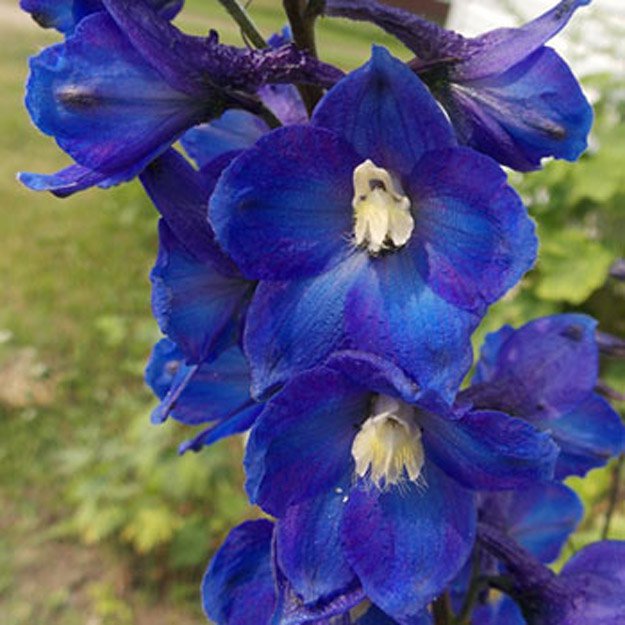
Also commonly known as “larkspur,” the Delphinium is highly toxic to both humans and animals. While dangerous to eat, Delphinium's tall, bell-like blooms and tall stems make for beautiful additions to gardens or cut for bouquets.
Sun Needs: Full Sun
Soil Needs: Well-drained
Zones: 3 – 7
Height: 3 – 8 feet
Blooms in: Early Summer – Early Fall
Features: Good for cut flowers
Diascia | Types of Flowers
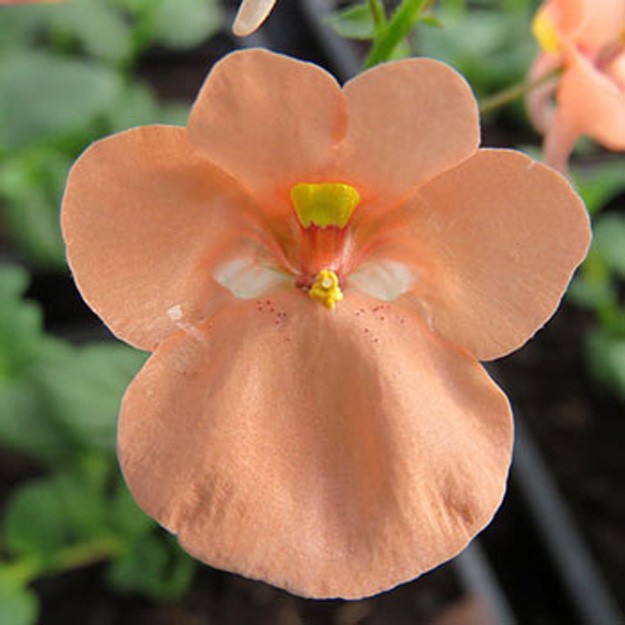
The low growing Diascia makes for a great filler in outdoor containers, hanging baskets, window boxes and indoor pots. They are also relatively easy to grow, requiring only full sun and cool weather.
Sun Needs: Full Sun
Soil Needs: Well-drained
Zones: 8 – 9
Height: 0.5 – 1 foot
Blooms in: Early Summer – Mid-Fall
Features: Non-invasive
Dusty Miller | Types of Flowers
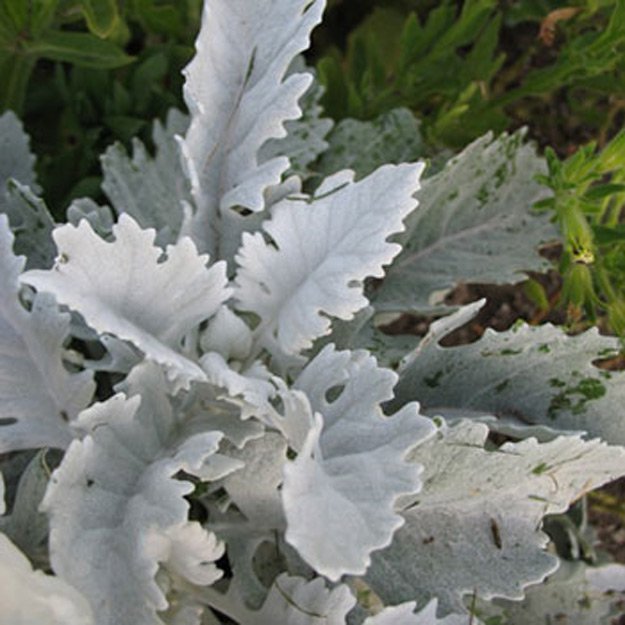
This hardy drought and frost tolerant plant makes for an ideal filler for outdoor containers and gardens. Its silver-grey foliage provides a nice backdrop to any bolder colored blooms.
Sun Needs: Full Sun / Partial Shade
Soil Needs: Well-drained
Zones: 8 – 10
Height: 0.75 – 2 feet
Blooms in: Late Summer – Early Fall
Features: Good for pressed flowers
Dutchman's Breeches | Types of Flowers

These sweet flowers get their name from the up-side-down hanging blooms that resemble pants. Dutchman's Breeches are one of the few flowers whose seeds are spread by ants, so don't fret if you see a colony nearby!
Sun Needs: Partial Shade
Soil Needs: Well-drained
Zones: 3 – 8
Height: 0.5 – 1 foot
Blooms in: Mid-Spring
Features: Non-invasive
Epimedium | Types of Flowers
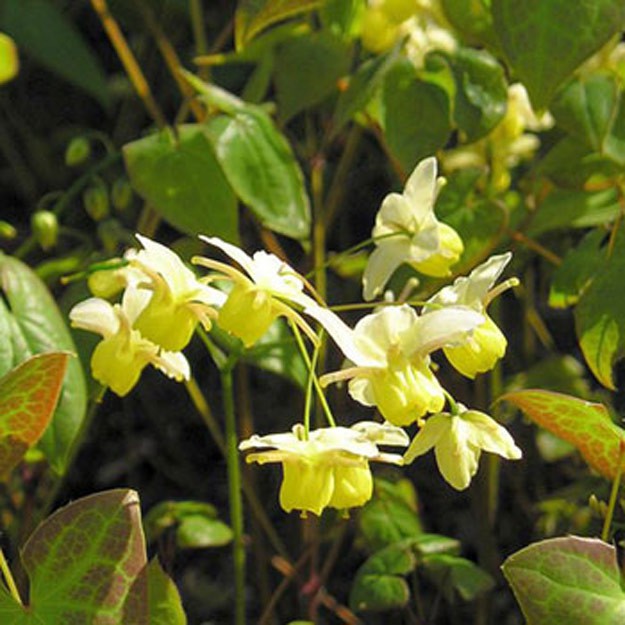
With green foliage and pink, yellow or purple flowers, the Epimedium makes for good groundcover in shady, moist gardens. As the seasons progress, their green leaves can have tints of bronze, copper and red.
Sun Needs: Partial Shade / Full Shade
Soil Needs: Well-drained
Zones: 4 – 8
Height: 0.25 – 1.5 feet
Blooms in: Mid-Spring – Late Spring
Features: Deer resistant
Evergreen Candytuft | Types of Flowers
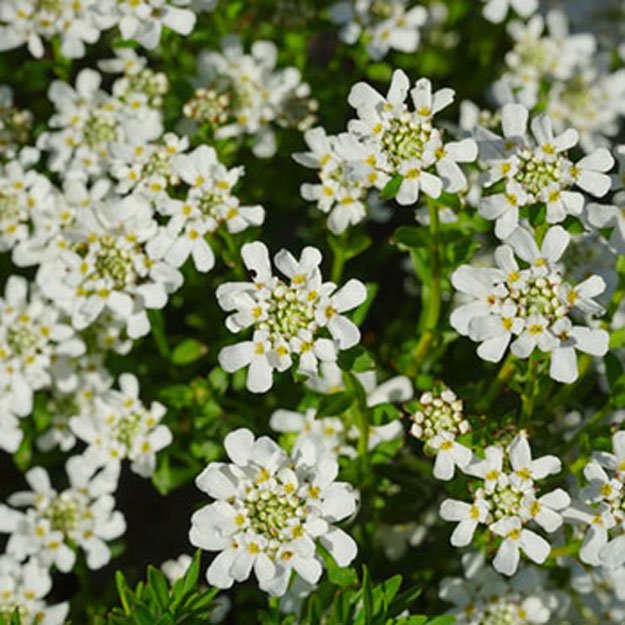
Know for its small, cloud-like blooms, this sun-loving flower makes for a great addition to rock gardens. Often cascading over rocks or walls, the Evergreen Candytuft is ideal for a filler in containers or to act as a border.
Sun Needs: Full Sun
Soil Needs: Well-drained
Zones: 5 – 9
Height: 0.5 – 1 foot
Blooms in: Mid-Spring
Features: Tolerates heat
Fennel | Types of Flowers
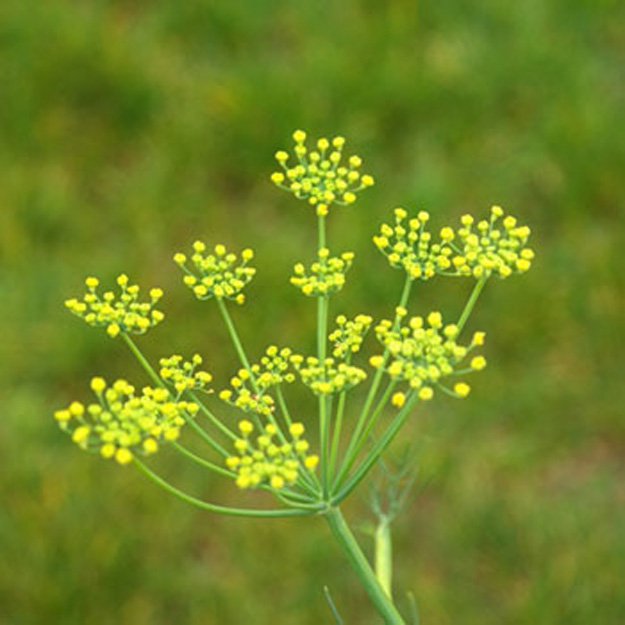
When not harvested, this edible perennial herb can grow up to 6 feet tall and feature dark foliage. It also attracts beneficial insects, including swallowtail butterflies.
Sun Needs: Full Sun
Soil Needs: Well-drained
Zones: 4 – 9
Height: 3 – 6 feet
Blooms in: Mid-Summer – Late Summer
Features: Attracts beneficial insects
Fountain Grass | Types of Flowers
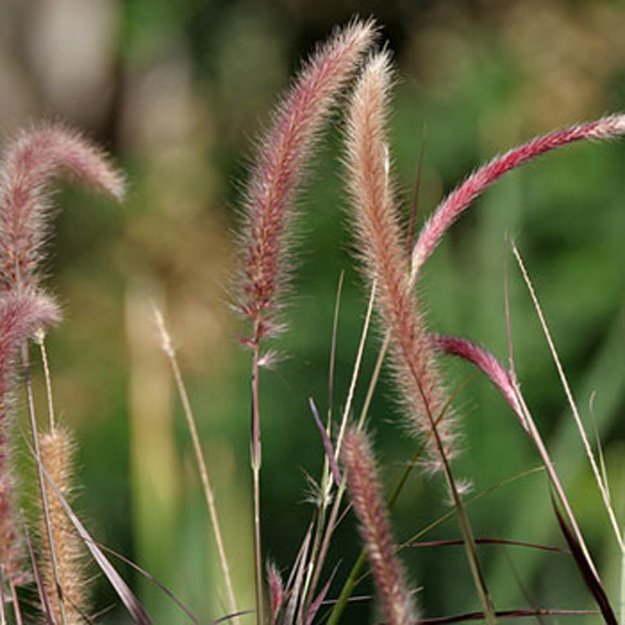
This ornamental grass shows off flowy, plumed flowerheads and provide a unique contrast to any garden. They are most commonly found in white, but for more of a “wow” factor, look for shades of red, violet and pink.
Sun Needs: Full Sun / Partial Shade
Soil Needs: Well-drained
Zones: 6 – 11
Height: 2 – 4 feet
Blooms in: Late Spring – Early Fall
Features: Deer resistant
Foxglove | Types of Flowers
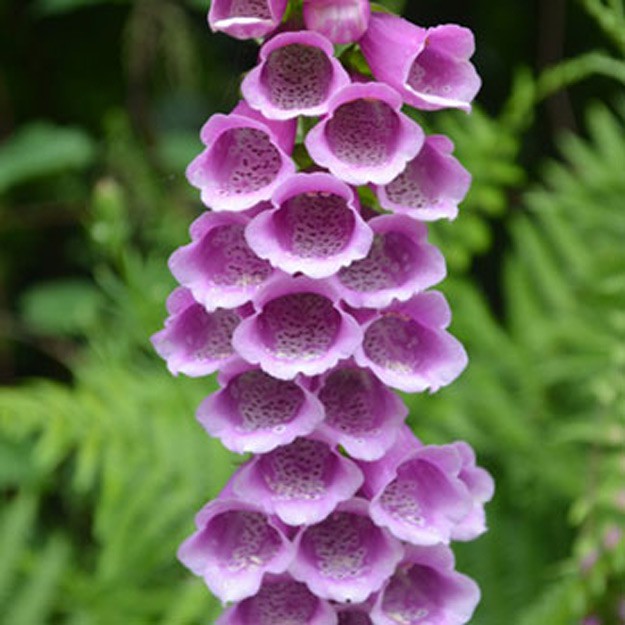
This elegant flower requires a bit of patience, as it typically takes two seasons before its iconic blooms appear. But the wait is worth the payoff and the hardy Foxglove can handle a wide range of sun and soil types.
Sun Needs: All Sun Types
Soil Needs: Well-drained
Zones: 4 – 8
Height: 1 – 6 feet
Blooms in: Late Spring – Early Summer
Features: Good for cut flowers
Gaillardia | Types of Flowers
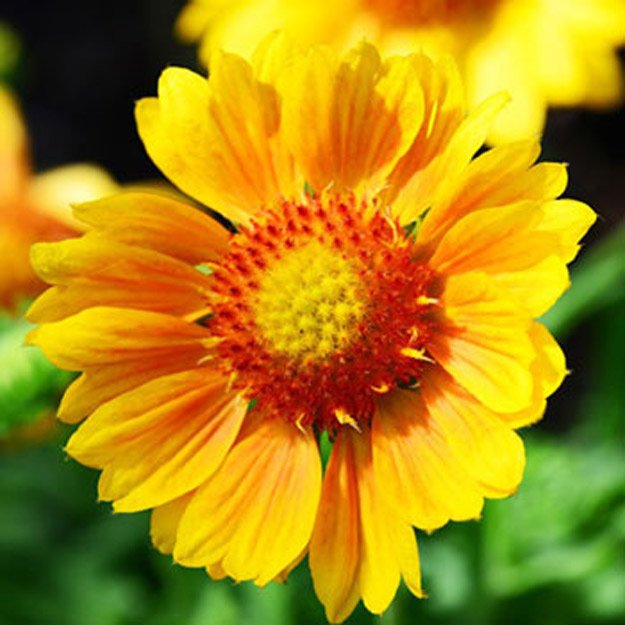
Ideal for hot, dry landscapes, the Gaillardia adds some extra spice to any garden. In bright hues of red, orange, yellow and violet, the Gaillardia makes for a dramatic wildflower bouquet.
Sun Needs: Full Sun
Soil Needs: Well-drained
Zones: 5 – 9
Height: 0.66 – 2 feet
Blooms in: Early Summer – Mid-Fall
Features: Good for cut flowers
Gas Plant | Types of Flowers

Gas plants can take a few years to cultivate, but are easy to care for and, once flowering, give off an aromatic scent. Be careful though, the flowers and foliage are known to cause skin rashes for some.
Sun Needs: Full Sun
Soil Needs: Well-drained
Zones: 3 – 8
Height: 2 – 4 feet
Blooms in: Late Spring – Early Summer
Features: Deer resistant
Gaura | Types of Flowers
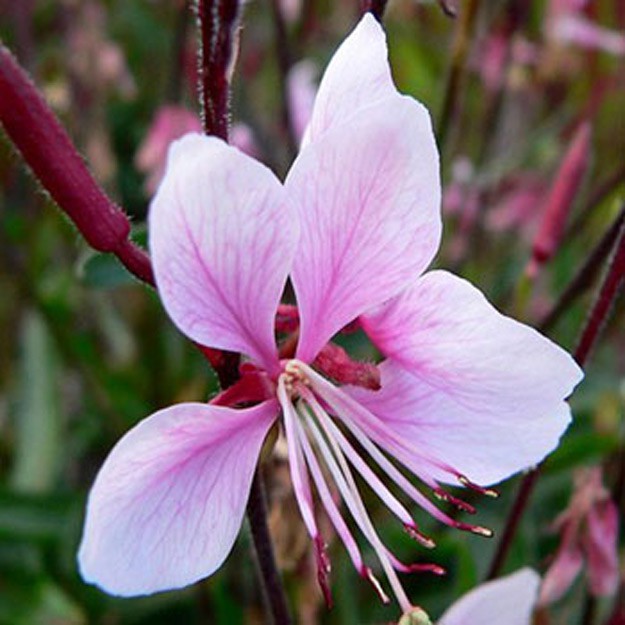
The elegant Gaura features dainty white or pink blooms. Thriving in a variety of soil types, the Gaura is known to quickly take over gardens and be difficult to trim down—so don't let your garden go unmanaged for too long!
Sun Needs: Full Sun
Soil Needs: Well-drained
Zones: 5 – 10
Height: 3 – 4 feet
Blooms in: Mid-Summer – Early Fall
Features: Good for cut flowers
Gazania | Types of Flowers
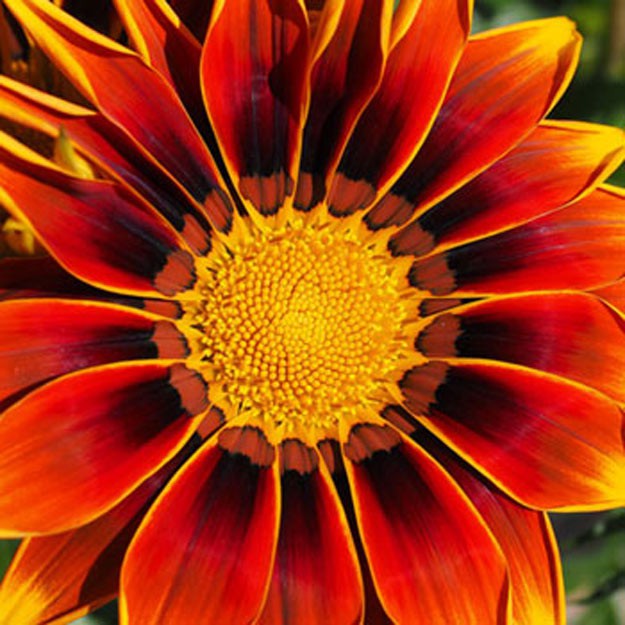
Growing large, daisy-like flowers, the Gazania is commonly used as colorful groundcover in sun soaked gardens. It can also be brought inside during the fall as long as it's kept near bright light and few waterings.
Sun Needs: Full Sun
Soil Needs: Well-drained
Zones: 8 – 10
Height: 0.5 – 1.5 feet
Blooms in: Early Summer – Early Fall
Features: Attracts butterflies
Geranium | Types of Flowers
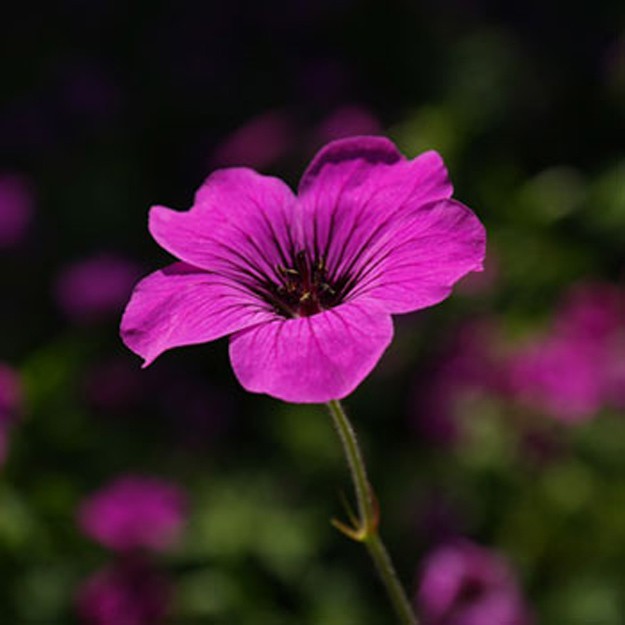
Geranium includes 422 species, known for its five colorful petals commonly found in white, pink, purple or blue. Geraniums are a favorite amongst gardeners given their ease of care and ability to thrive in outdoor containers.
Sun Needs: All Sun Types
Soil Needs: Well-drained
Zones: 4 – 8
Height: 0.75 – 2.5 feet
Blooms in: Early Summer – Early Fall
Features: Deer resistant
Geum | Types of Flowers
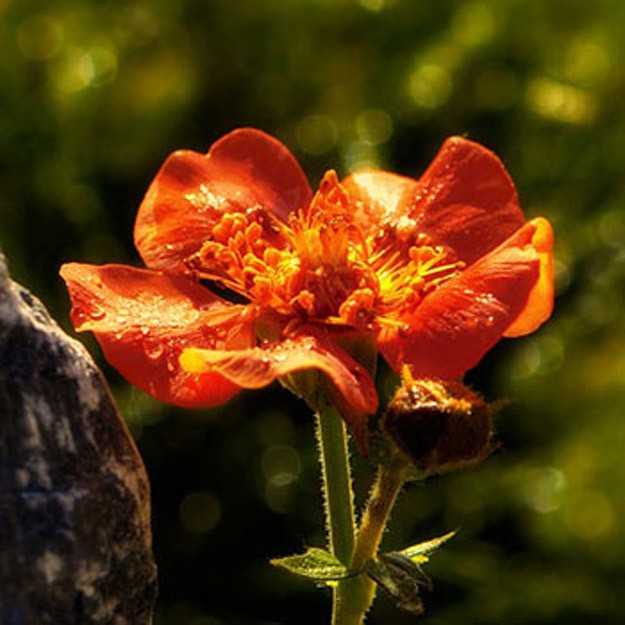
The fickle Geum prefers full sun, but doesn't thrive in extreme weather changes. Moderately difficult to cultivate, their tall, striking spring blooms last only a few months.
Sun Needs: All Sun Types
Soil Needs: Well-drained
Zones: 5 – 8
Height: 1 – 2 feet
Blooms in: Late Spring – Early Summer
Features: Non-invasive
Globe Thistle | Types of Flowers
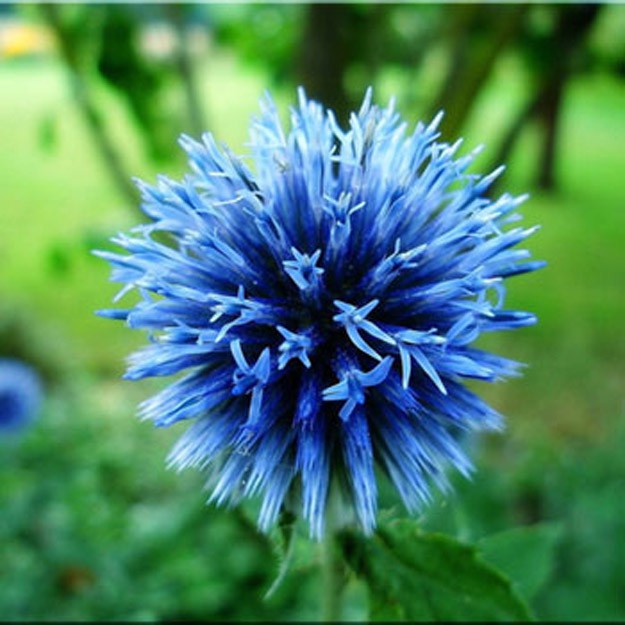
The Globe Thistle, with its tall stem and spherical flowerhead, screams for attention. Coming in shades of blue and violet, the Globe Thistle attracts bees and butterflies, as well as making for a gorgeous cut bouquet.
Sun Needs: Full Sun
Soil Needs: Well-drained
Zones: 3 – 9
Height: 2 – 4 feet
Blooms in: Mid-Summer – Early Fall
Features: Attracts butterflies
Glory of the Snow | Types of Flowers

Glory of the Snow is an early bloomer, making it a popular choice for gardeners looking for a low growing plant to carpet their landscaping. Be sure to maintain their growth, as once established they tend to quickly form large clumps.
Sun Needs: All Sun Types
Soil Needs: Well-drained
Zones: 4 – 9
Height: 0.3 – 0.5 foot
Blooms in: Early Spring
Features: Non-invasive
Goatsbeard | Types of Flowers
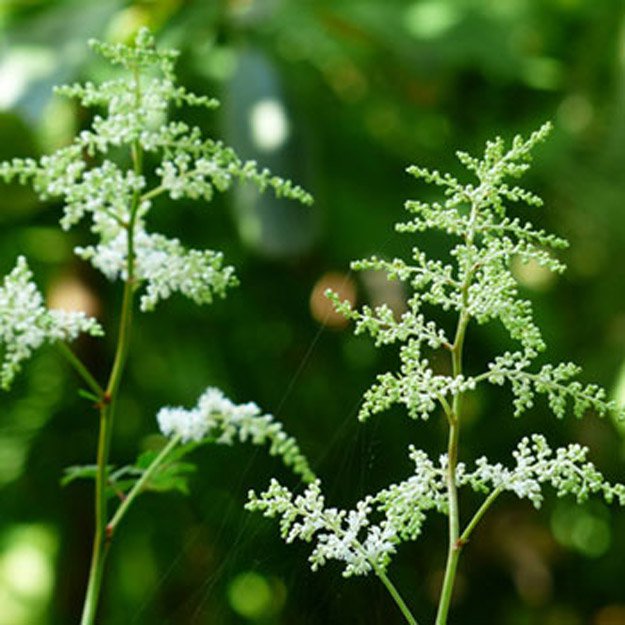
These feathery white or yellow blooms grow as tall at 6 feet, providing a striking backdrop to any garden. Goatsbeard performs best in partial shade and prefers a moist environment.
Sun Needs: Partial Shade / Full Shade
Soil Needs: Well-drained
Zones: 3 – 9
Height: 4 – 6.5 feet
Blooms in: Summer
Features: Non-invasive
Golden Marguerite | Types of Flowers
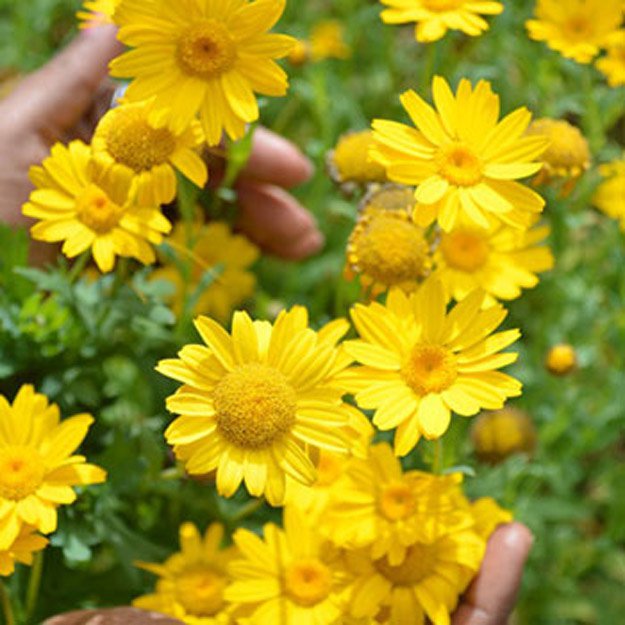
The daisy-like Golden Marguerite is short lived, so take in its aromatic foliage and sweet flowers while its around. Towards the end of the season, you can collect them and use the flowers as a natural fabric dye to produce shades of yellow.
Sun Needs: Full Sun
Soil Needs: Well-drained
Zones: 3 – 7
Height: 2 – 3 feet
Blooms in: Summer
Features: Good for cut flowers
Gomphrena | Types of Flowers
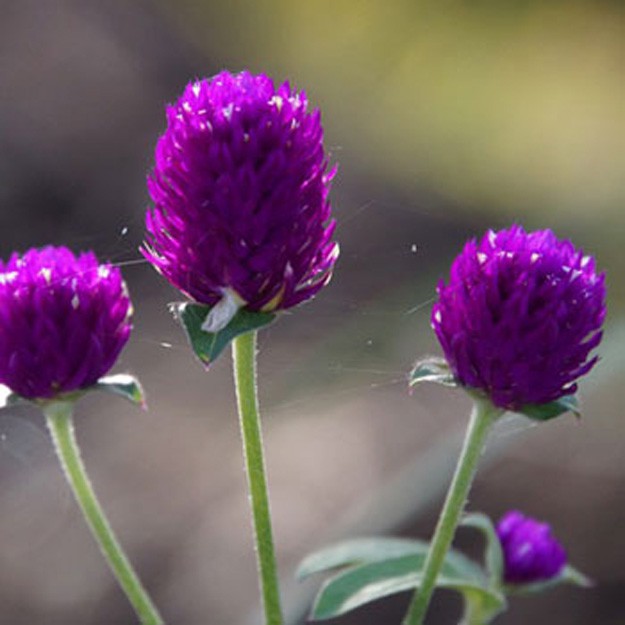
The globe-like flowerheads of the Gomphrena brighten any garden. Hardy and easy to grow, the Gomphrena is a popular choice in dried flower bouquets and Hawaiian leis given it'll hold it's compact shape after being cut.
Sun Needs: Full Sun
Soil Needs: Well-drained
Zones: 7 – 10
Height: 0.5 – 2 feet
Blooms in: Mid‑Summer – Mid‑Fall
Features: Good for cut flowers
Heliotrope | Types of Flowers

Derived from the Greek words for “sun” and “turn,” the Heliptrope actually performs best when planted in partial shade. Their tiny, delicate cluster of blue, violet or white blooms make for good outdoor containers and can even be brought indoors in a cool, sunny spot in your home.
Sun Needs: All Sun Types
Soil Needs: Well-drained
Zones: 10 – 11
Height: 1.5 – 3 feet
Blooms in: Mid‑Summer – Early Fall
Features: Attracts butterflies
Hepatica | Types of Flowers
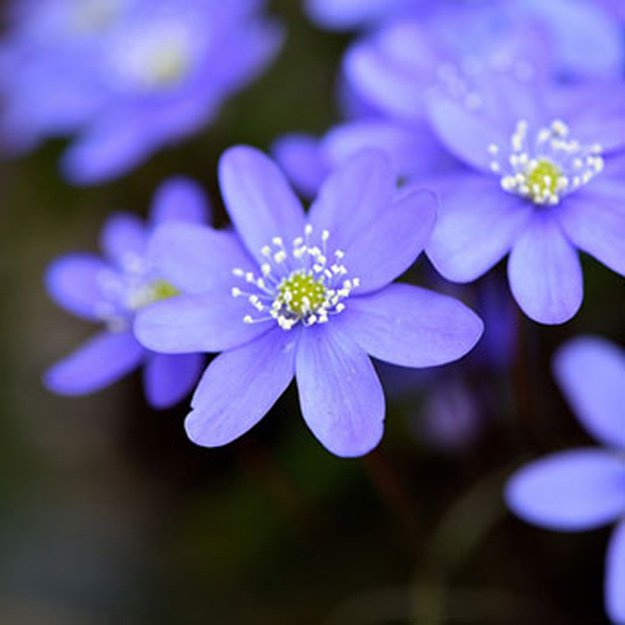
The small woodland Hepatica features blue, violet, pink or white blooms. Named after the Greek word for “liver,” Hepatica foliage is a clump of three-lobed leaves that resemble a human liver.
Sun Needs: Partial Shade / Full Shade
Soil Needs: Well-drained
Zones: 5 – 8
Height: 0.25 – 0.5 foot
Blooms in: Early Spring – Mid-Spring
Features: Non-invasive
Hollyhock | Types of Flowers
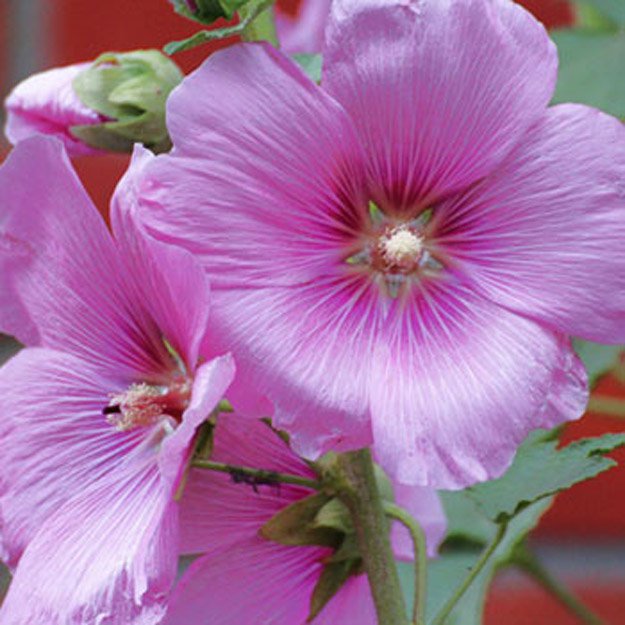
Hollyhocks are known for their tall spikes of trumpet-like flowers, commonly found in bright red, yellow, violet, white or pink. Hollyhocks can grow as tall as 8 feet, so have some stakes handy to prop them up and encourage growth.
Sun Needs: All Sun Types
Soil Needs: Well-drained
Zones: 3 – 9
Height: 4 – 8 feet
Blooms in: Mid‑Summer – Early Fall
Features: Non-invasive
Hosta | Types of Flowers
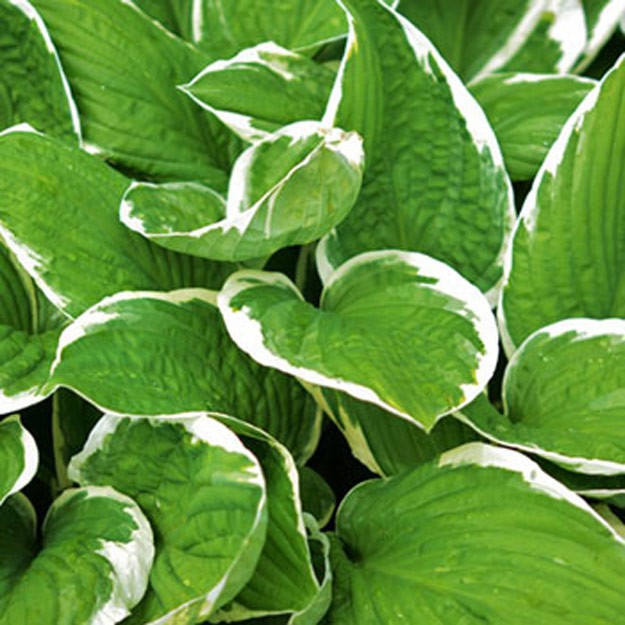
These shade tolerant plants are most popular for their large foliage shape and color. Acting as groundcover, Hosta foliage is commonly found in dark green and white, but can also feature blue and yellow.
Sun Needs: Partial Shade / Full Shade
Soil Needs: Well-drained
Zones: 3 – 9
Height: 1 foot
Blooms in: Summer
Features: Non-invasive
Hyacinth | Types of Flowers
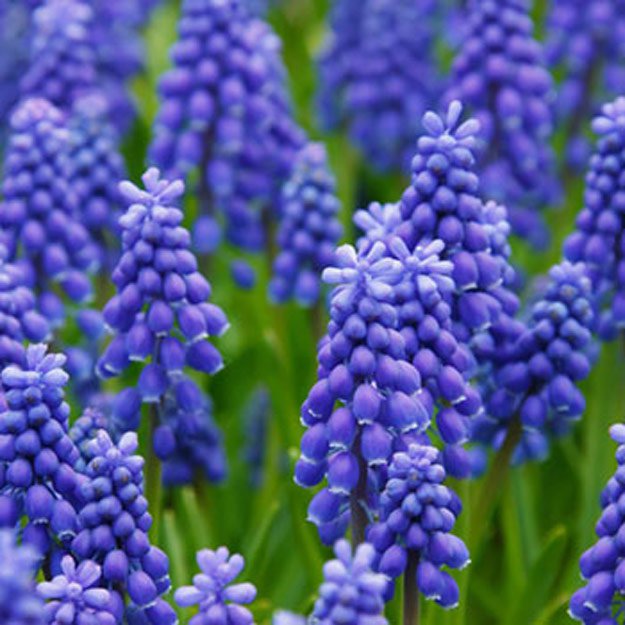
This popular bulb plant produces bulbous-like flowers in vibrant shades of blue, indigo and violet. An easy to grow plant, Hyacinths can be grown for for a variety of uses, such as outdoor containers, rock gardens or indoors.
Sun Needs: Full Sun
Soil Needs: Well-drained
Zones: 4 – 9
Height: 1 – 3 feet
Blooms in: Mid‑Summer – Early Fall
Features: Non-invasive
Hyssop | Types of Flowers
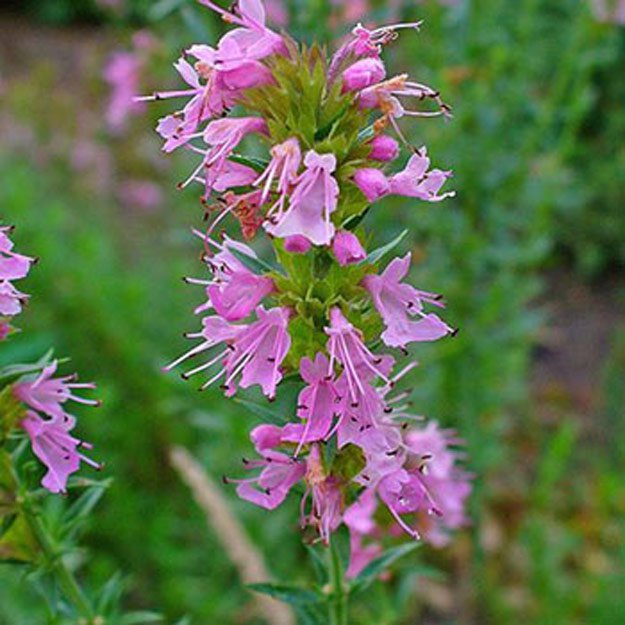
The versatile Hyssop is grown in a variety of ways, including containers, around garden borders or clumped together. Hyssops can grow in poor soil and tolerate drought.
Sun Needs: Full Sun
Soil Needs: Well-drained
Zones: 3 – 10
Height: 1 – 2 feet
Blooms in: Mid‑Summer – Late Summer
Features: Good for cut flowers
Impatiens | Types of Flowers
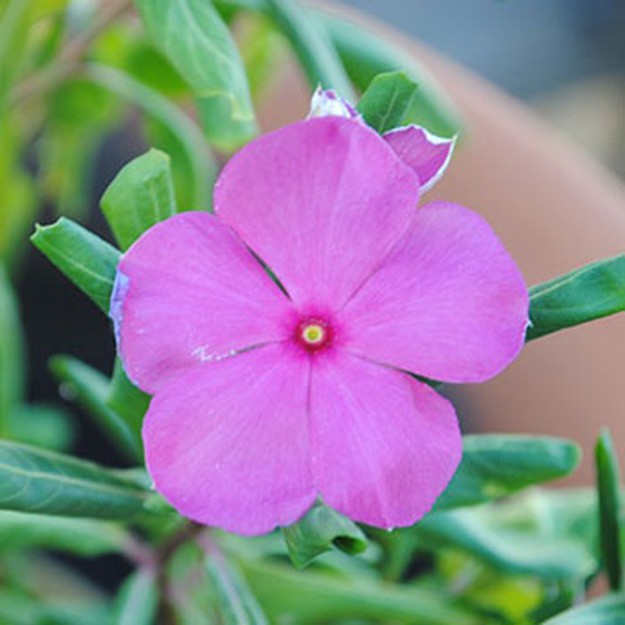
Impatiens make for great container plants, either indoors or outdoors, given their ability to tolerate damp soil and shady areas. Their low, dark foliage will spout a range of colors, including red, orange, violet, white and pink.
Sun Needs: Partial Shade / Full Shade
Soil Needs: Well-drained
Zones: 8 – 10
Height: 0.5 – 2.5 feet
Blooms in: Early Summer – Early Fall
Features: Non-invasive
Iris | Types of Flowers

Known for its ornate flowers, the Iris is from the Greek word for “rainbow.” The Greeks had it right, as this popular flower appears in every color spectrum. Made up of more than 250 species, the Iris ranges in height and bloom times.
Sun Needs: All Sun Types
Soil Needs: Well-drained
Zones: 3 – 9
Height: 0.25 – 6 foot
Blooms in: Early Spring – Early Fall
Features: Good for cut flowers
Jack-in-the-Pulpit | Types of Flowers
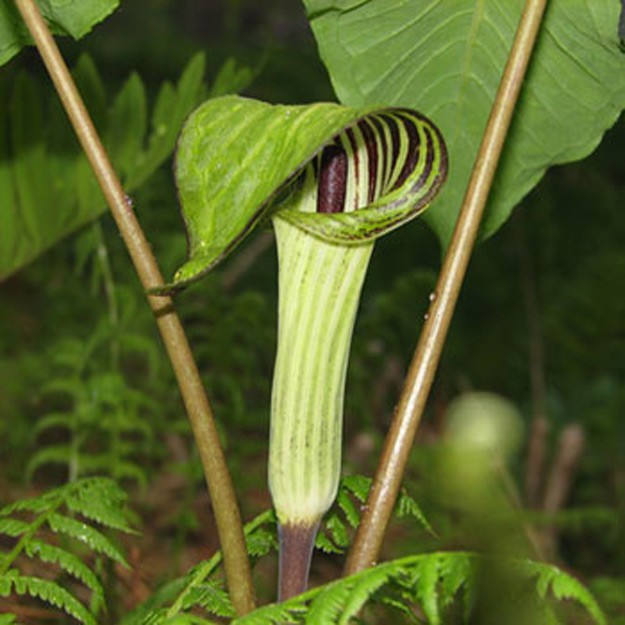
Given its equally playful name, the Jack-in-the-Pulpit foliage grows unexpectedly, creating a hood-like shape once fully grown. Before the flower appears, it's often confused as poison ivy.
Sun Needs: All Sun Types
Soil Needs: Well-drained
Zones: 4 – 9
Height: 1 – 1.5 feet
Blooms in: Mid-Spring – Late Spring
Features: Non-invasive
Jacob’s Ladder | Types of Flowers
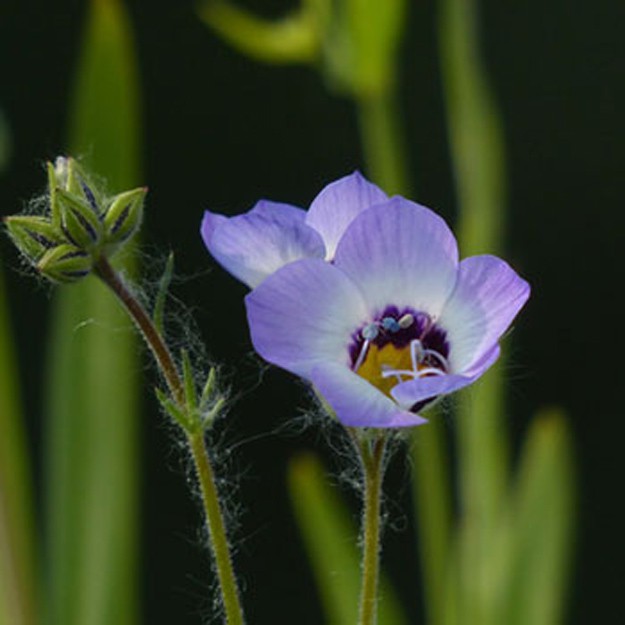
Jacob's Ladder doesn't get its name not from its blooms, rather the arrangement of the leaves going up the stem that resembles a ladder. The dainty, bell-like flowers of the Jacob's Ladder make for a beautiful garden favorite.
Sun Needs: All Sun Types
Soil Needs: Well-drained
Zones: 3 – 9
Height: 1 – 3 feet
Blooms in: Late Spring – Mid‑Summer
Features: Non-invasive
Lady's Mantle | Types of Flowers
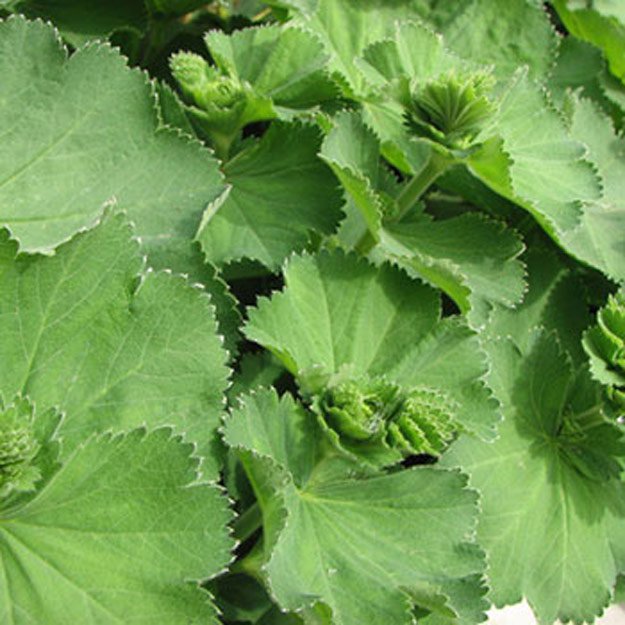
With foliage loosely resembling cabbage, the Lady's Mantle is most well known as a medicinal herb. If you're looking to add some green to your bouquet, the Lady's Mantle looks elegant once cut.
Sun Needs: All Sun Types
Soil Needs: Well-drained
Zones: 3 – 7
Height: 1 – 2 feet
Blooms in: Summer
Features: Good for cut flowers
Lantana | Types of Flowers
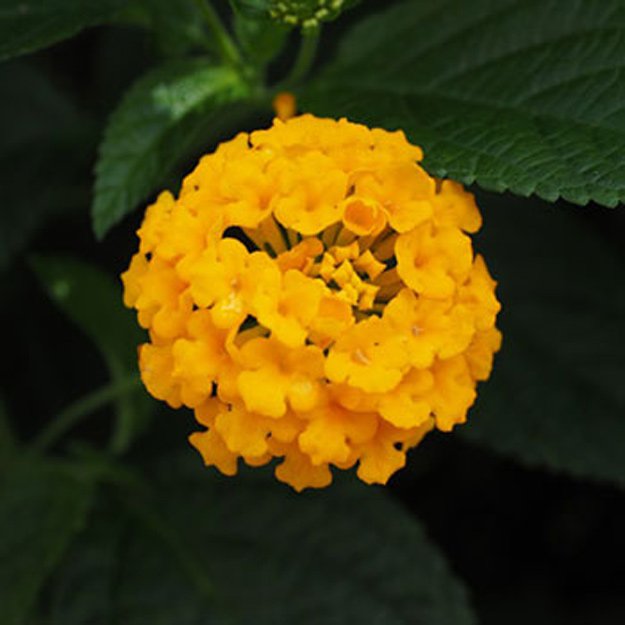
Also known as Yellow Sage, the Lantana blooms in combinations of red, orange, yellow, violet, white and pink. While popular for outdoor containers and houseplants, some have found the subtle citrus scent to be off putting.
Sun Needs: Full Sun
Soil Needs: Well-drained
Zones: 2 -11
Height: 2 – 6 feet
Blooms in: Mid‑Summer – Late Summer
Features: Tolerates frost
Lavender | Types of Flowers

Popular in gardening, fragrance and cooking, you can't go wrong with a Lavender plant. In addition to its versatility, Lavender is easy to grow, requiring very little water and full sun.
Sun Needs: Full Sun
Soil Needs: Well-drained
Zones: 5 – 9
Height: 1 – 3 feet
Blooms in: Summer
Features: Good for cut flowers
Lavender Cotton | Types of Flowers
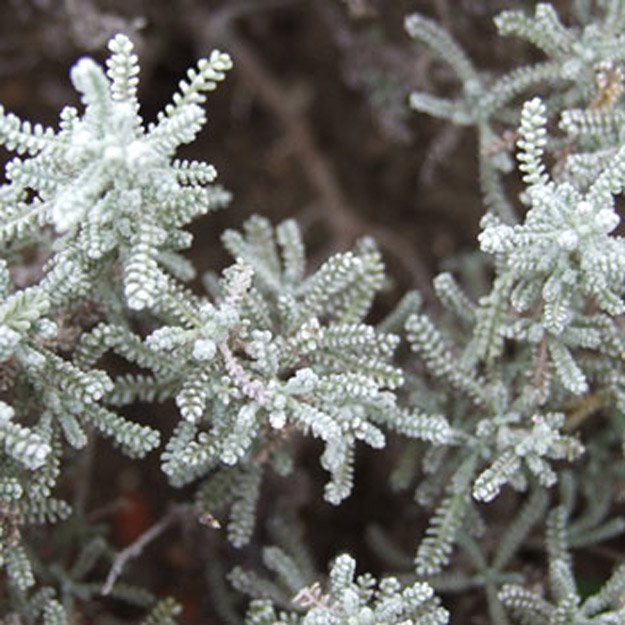
Despite its name, the flowers on Lavender Cotton have an unpleasant scent, but perfumeries will extract its oil to use in colognes and perfumes. For gardening, this shrubby evergreen tolerates many soil types and full sun.
Sun Needs: Full Sun
Soil Needs: Well-drained
Zones: 6 – 8
Height: 1 – 2.5 feet
Blooms in: Mid‑Summer – Late Summer
Features: Non-invasive
Leadwort | Types of Flowers
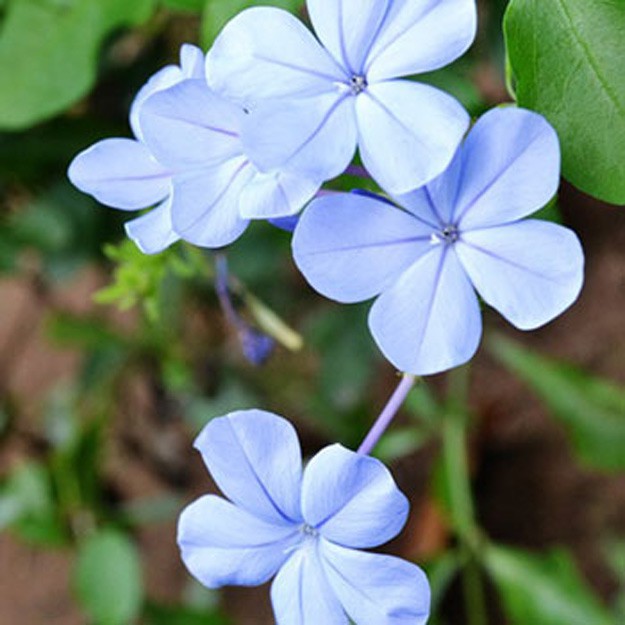
Starting in the late summer, but lasting until early fall, Leadwort features dainty, dark blue flowers. While you may have to wait a while to see blooms, Leadworts are fine when left with morning sun and afternoon shade.
Sun Needs: Full Sun / Partial Shade
Soil Needs: Well-drained
Zones: 5 – 8
Height: 0.75 – 1 foot
Blooms in: Late Summer – Early Fall
Features: Non-invasive
Lemon Balm | Types of Flowers
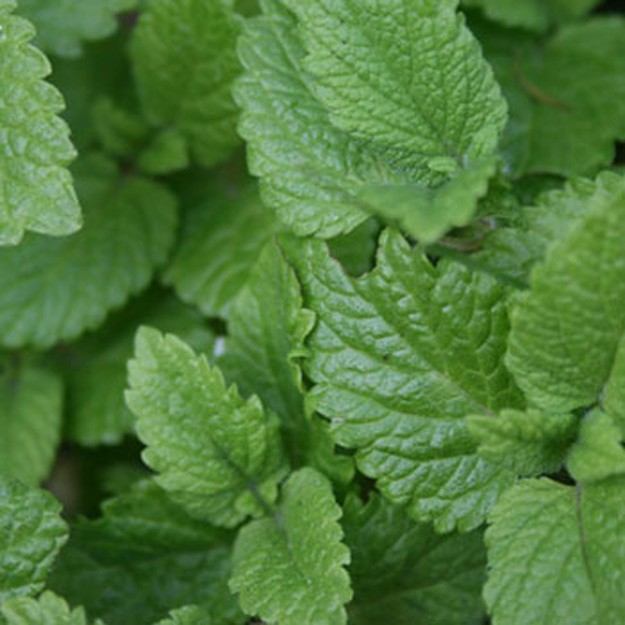
Love the smell of citrus? The bright lemony scent of this plant is perfect for you. Easy to grow and quick to spread, Lemon Balm is ideal for filler and background in a garden or outdoor container.
Sun Needs: Full Sun / Partial Shade
Soil Needs: Well-drained
Zones: 3 – 7
Height: 2 – 4 feet
Blooms in: Early Summer – Early Fall
Features: Attracts bees
Lily | Types of Flowers
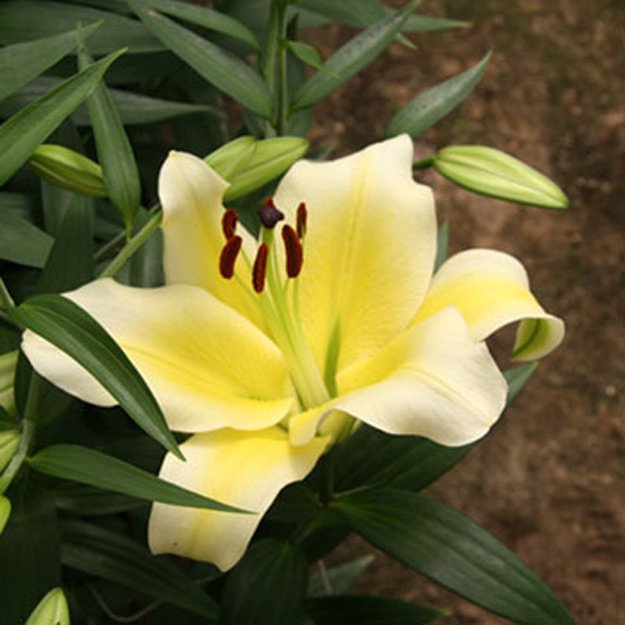
With more than 100 species, the Lily is know for its large, prominent flowers and long filaments. These fragrant flowers come in a range of colors including white, yellow, orange, pink, red and purple and some include markings such as spots or brush strokes. These beauties shine indoors, just be sure to cut their filaments to avoid pollen stains!
Sun Needs: Full Sun
Soil Needs: Well-drained
Zones: 4 – 8
Height: 2 – 6 feet
Blooms in: Spring – Early Fall
Features: Good for cut flowers
Lobelia | Types of Flowers
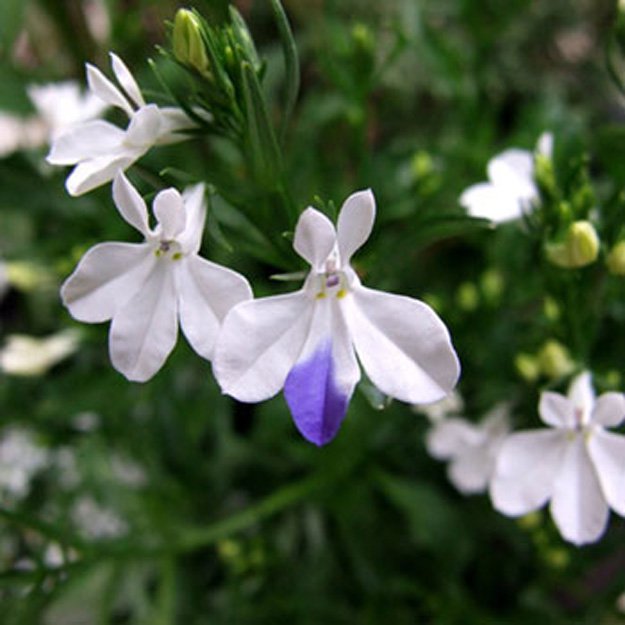
Lobelia is an excellent choice for hanging gardens or window boxes given their ability to create a long trail. Lobelias love intense heat and will bloom delicate flowers in shades of red, blue, violet and white.
Sun Needs: Full Sun / Partial Shade
Soil Needs: Well-drained
Zones: 2 – 10
Height: 0.33 – 0.75 foot
Blooms in: Early Summer – Mid‑Fall
Features: Attracts butterflies
Lupine | Types of Flowers
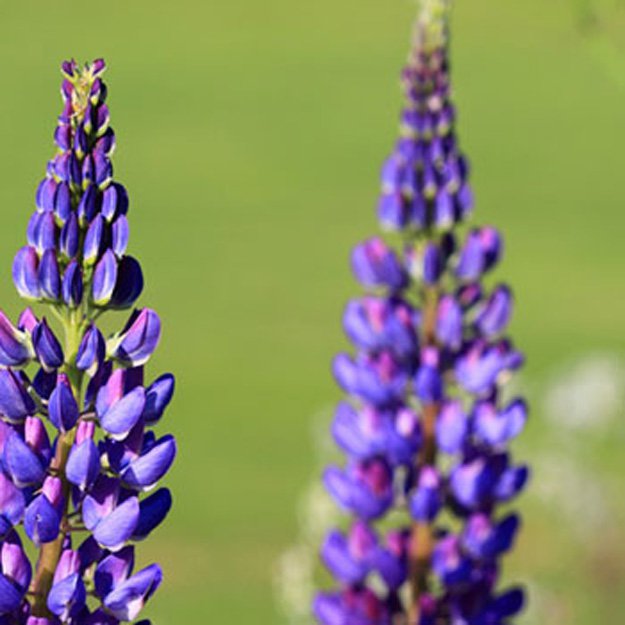
Also known as blueonnets or quaker bonnets, the Lupine has grey-green leaves coated in silvery hairs. The blue or purple flowers grow along the tall stems, while the seeds are often harvested as a substitute for soybeans.
Sun Needs: Full Sun / Partial Shade
Soil Needs: Well-drained
Zones: 3 – 9
Height: 2.5 – 5 feet
Blooms in: Summer
Features: Good for cut flowers
Maiden Pink | Types of Flowers
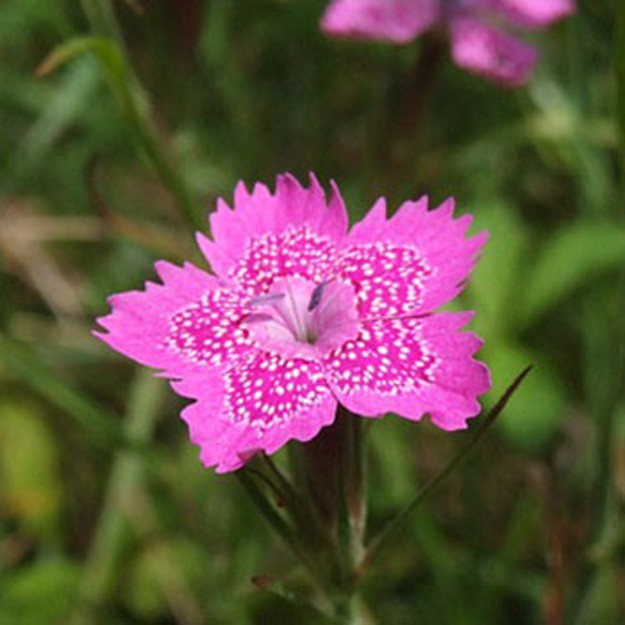
These sweet flowers produce fringed petals in bright shade or red, pink or white. Maiden Pink is hardy but also known to be an aggressive plant that self seeds, so its often used for groundcover or garden borders.
Sun Needs: Full Sun / Partial Shade
Soil Needs: Well-drained
Zones: 3 – 9
Height: 0.25 – 1 foot
Blooms in: Late Spring – Early Summer
Features: Non-invasive
Malva | Types of Flowers
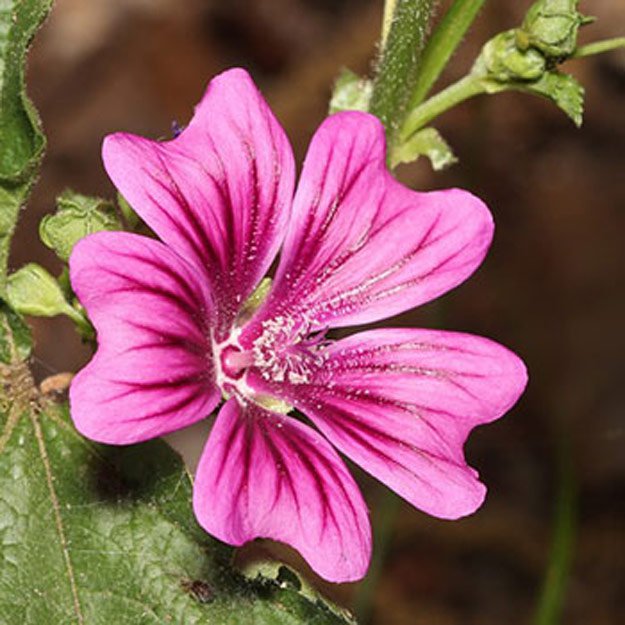
As the origin for the name of the color “mauve,” the Malva features pink and purple blooms with stripes that radiate outwards. Malva is a vigorous plant and often seen growing freely in fields and hedges.
Sun Needs: Full Sun
Soil Needs: Well-drained
Zones: 4 – 9
Height: 0.5 – 4 feet
Blooms in: Summer
Features: Good for cut flowers
Marigold | Types of Flowers
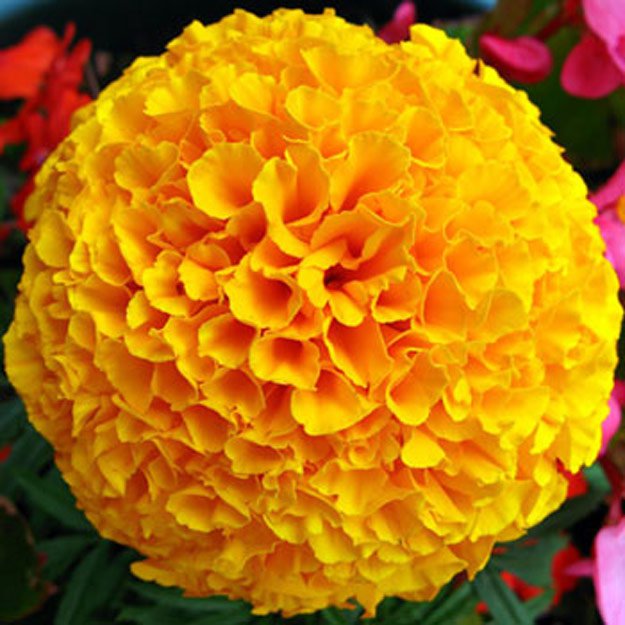
Marigolds are an easy easy way to add rich color to your garden. Aromatic and inviting to butterflies and hummingbirds, the Marigold comes primarily in shades of red, orange and yellow. Bring inside and arrange to make a beautiful golden bouquet.
Sun Needs: Full Sun
Soil Needs: Well-drained
Zones: 2 – 10
Height: 0.5 – 1.25 feet
Blooms in: Early Summer – Mid‑Fall
Features: Good for cut flowers
Mazus | Types of Flowers
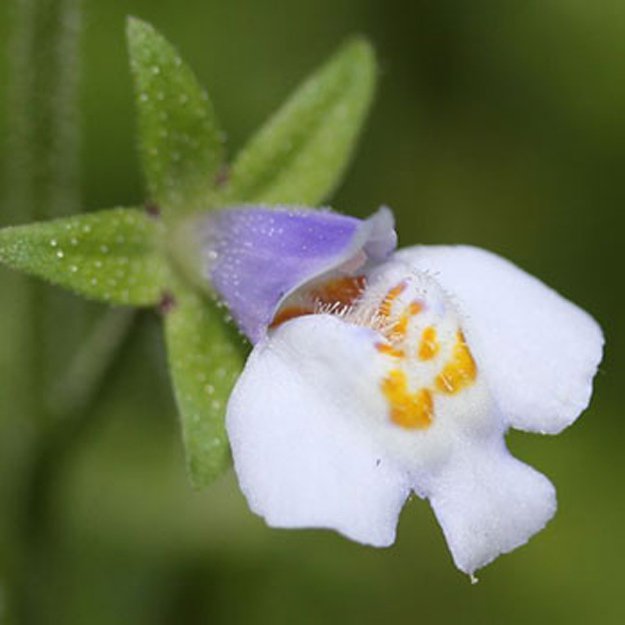
Mazus is excellent for rock gardens or growing alongside stepping stones, as these small perennials grow to only two inches tall. Watch out though, Mazus will spread quickly if not kept in check.
Sun Needs: Full Sun / Partial Shade
Soil Needs: Well-drained
Zones: 3 – 9
Height: 0.04 – 0.16 foot
Blooms in: Late Spring – Early Summer
Features: Non-invasive
Mirabilis | Types of Flowers
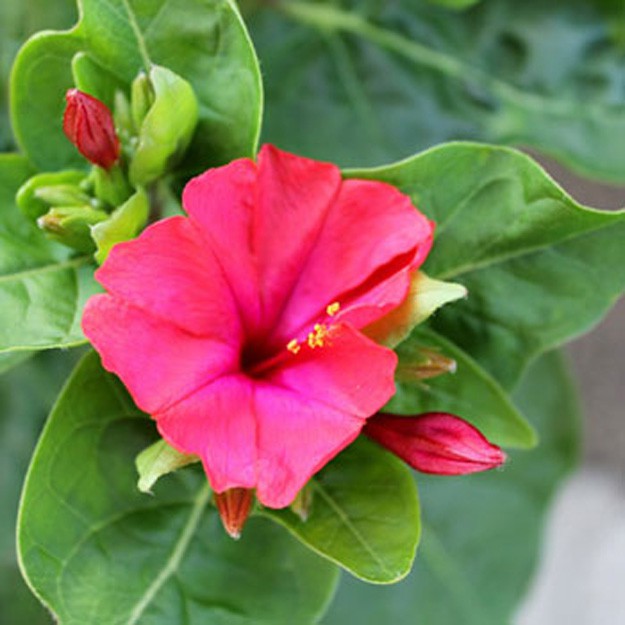
Also known as Four O'Clocks, the Mirabilis produces bright yellow, pink, purple, red and white flowers. Tolerating droughty soil, the Mirabilis is an easy to grow plant that will continue to bloom into mid-fall frost.
Sun Needs: Full Sun / Partial Shade
Soil Needs: Well-drained
Zones: 7 – 11
Height: 1.5 – 2 feet
Blooms in: Mid‑Summer – Mid‑Fall
Features: Attracts hummingbirds
Moonflower | Types of Flowers
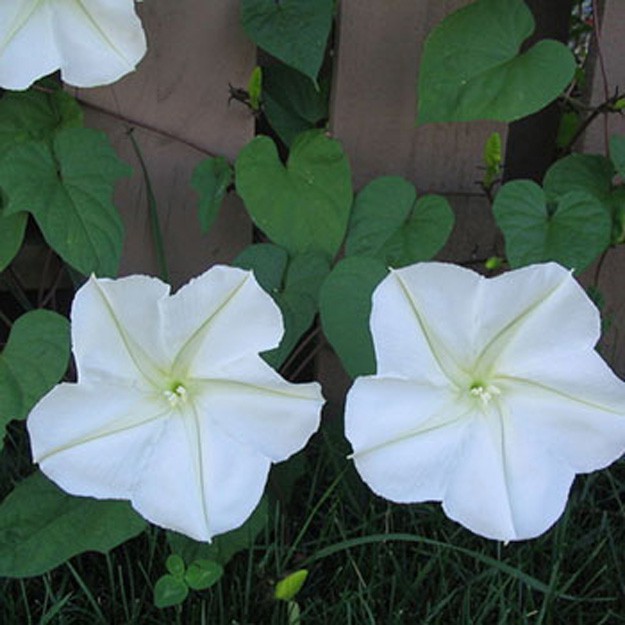
The Moonflower looks as sweet as it sounds. This vine only blooms at dusk and closes back up just after dawn. Attracting beneficial insects like hummingbirds and nocturnal moths, the Moonflower is the perfect addition to a garden trellis, gate or fence.
Sun Needs: Full Sun
Soil Needs: Well-drained
Zones: 10 – 11
Height: 6 – 15 feet
Blooms in: Early Summer – Early Fall
Features: Attracts hummingbirds
Morning Glory | Types of Flowers

The Morning Glory is most well known for their unraveling bloom that occurs in the early morning and shrivel back up in the hot afternoon sun. Once in bloom, flowers come in shades of red, blue, violet, white and pink and also feature star markings.
Sun Needs: Full Sun
Soil Needs: Well-drained
Zones: 2 – 11
Height: 6 – 10 feet
Blooms in: Early Summer – Early Fall
Features: Attracts hummingbirds
Nasturtium | Types of Flowers
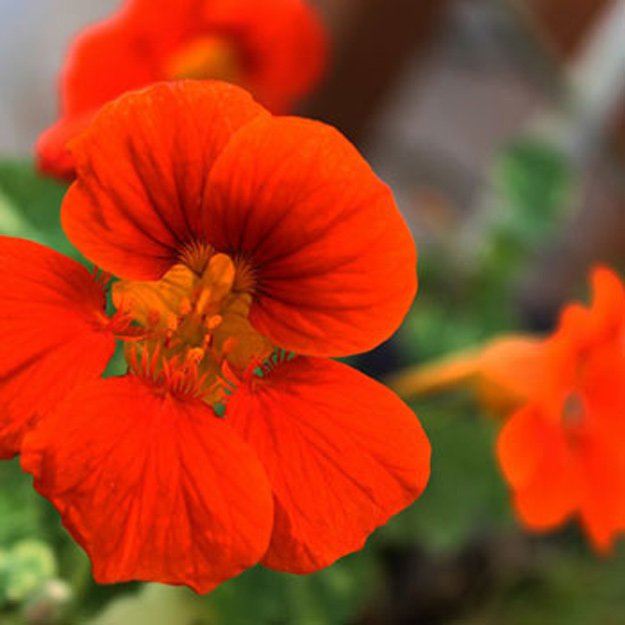
Nasturtium's vibrant red, orange and yellow flowers not only add a pop of color to gardens and outdoor containers, their flowers also make for a zesty addition to salads. Nasturtiums are tough and thrive in droughty and low fertile soils, making it ideal for warmer climates.
Sun Needs: Full Sun
Soil Needs: Well-drained
Zones: 9 – 11
Height: 0.8 – 1.5 feet
Blooms in: Early Summer – Mid‑Fall
Features: Good for cut flowers
Nierembergia | Types of Flowers
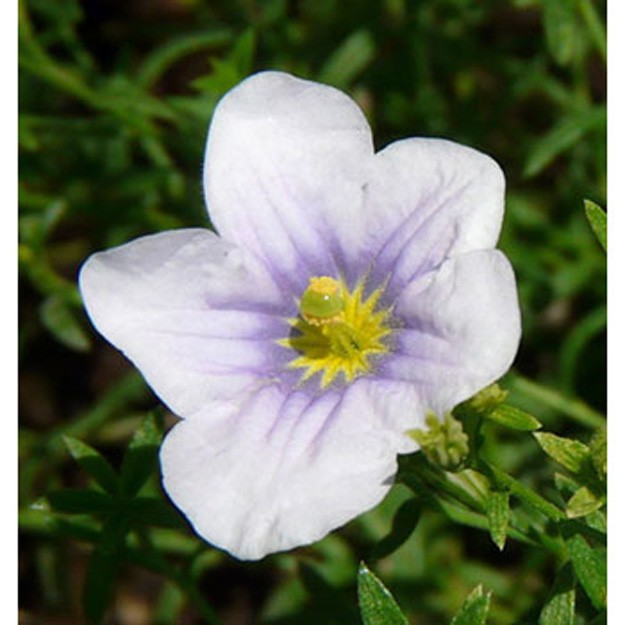
Also known as Cupflower, the Nierembergia prefers rich, moist soil and comes in blue, violet and white shades. Growing into early fall, the Nierembergia can handle some frost and make for great late-season bouquets.
Sun Needs: Full Sun / Partial Shade
Soil Needs: Well-drained
Zones: 7 – 10
Height: 0.5 – 1 foot
Blooms in: Mid‑Summer – Early Fall
Features: Good for cut flowers
Orchid | Types of Flowers
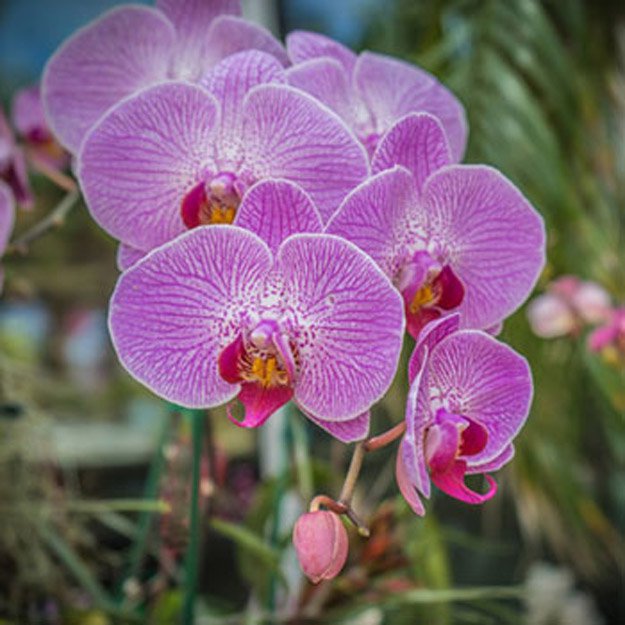
As one of the top two largest flower plant families, the Orchid consists of about 27,800 accepted species. The most common genus, Phalaenopsis, is what is typically seen in home gardens and containers. They come in a variety of tropical colors, including violet, pink, orange, red and white.
Sun Needs: Full Sun / Partial Shade
Soil Needs: Well-drained
Zones: 2 – 8
Height: 1 – 2 ft
Blooms in: Early Spring – Early Fall
Features: Good for cut flowers
Osteospermum | Types of Flowers

Also known as the African Daisy, Osteospermums come in yellow, blue, violet, white and pink. While difficult at first to cultivate, Osteospermums tolerate a variety of soil conditions and can grow during frost into mid-fall.
Sun Needs: Full Sun
Soil Needs: Well-drained
Zones: 9 – 11
Height: 2 – 5 feet
Blooms in: Mid‑Summer – Mid-Fall
Features: Good for cut flowers
Pansy | Types of Flowers
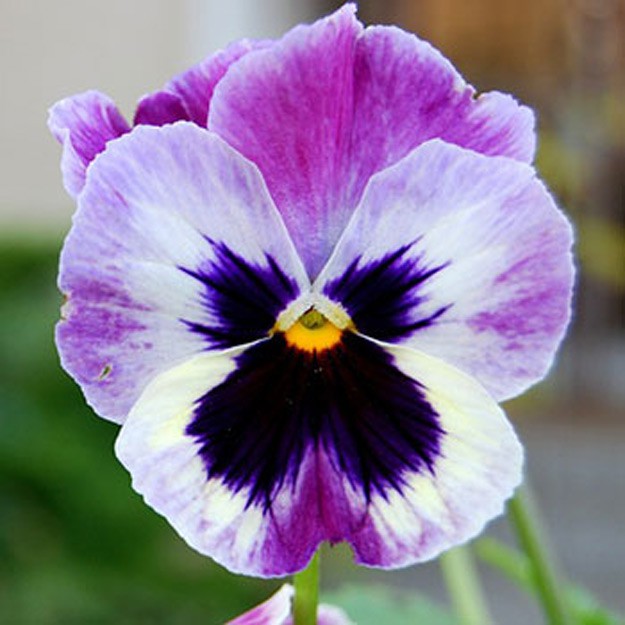
These delightful, friendly flowers are early bloomers and often one of the first signs of springtime. With brightly lit faces in shades of red, orange, yellow, blue, violet, white and pink, Pansies will bloom in single, bicolors or tricolors.
Sun Needs: Full Sun / Partial Shade
Soil Needs: Well-drained
Zones: 2 – 11
Height: 0.5 – 0.75 foot
Blooms in: Spring
Features: Tolerates frost
Pearly Everlasting | Types of Flowers

Pearly Everlasting blooms into mid-fall, making a perfect fit for the frost prone garden. Requiring damp soil, Pearly Everlasting is easy to grow but must be maintained to avoid overgrowth.
Sun Needs: Full Sun / Partial Shade
Soil Needs: Damp
Zones: 3 – 8
Height: 1 – 3 feet
Blooms in: Mid‑Summer – Early Fall
Features: Good for cut flowers
Perennial Flax | Types of Flowers

The Perennial Flax has a short lifespan and is moderately difficult to care for, requiring well-drained soil and full sun. Once in bloom though, it will self seed and grow to a large, cushion clump.
Sun Needs: Full Sun
Soil Needs: Well-drained
Zones: 5 – 9
Height: 1 – 2 feet
Blooms in: Summer
Features: Tolerates heat
Periwinkle | Types of Flowers
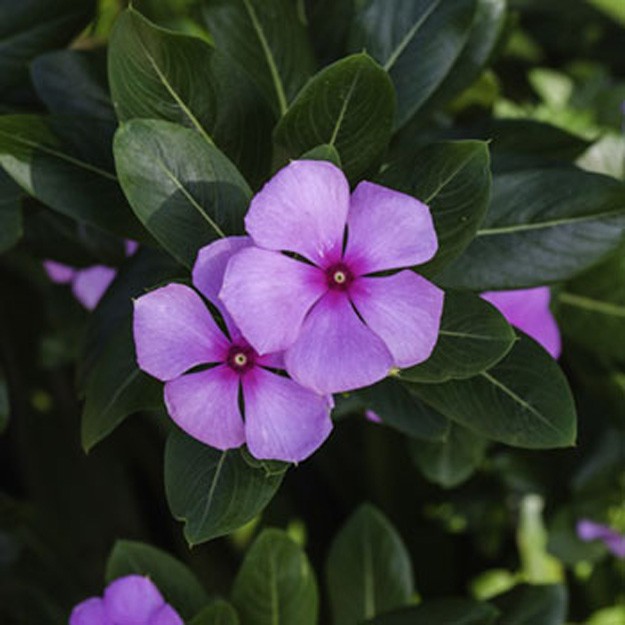
This long lasting plant (known to grow over three seasons) is simple to manage and produces vibrant flowers in violet, white or pink. Keep the bloom lasting into the winter by bringing it indoors and placing it in full sun.
Sun Needs: Full Sun / Partial Shade
Soil Needs: Droughty
Zones: 2 – 11
Height: 1 – 2 feet
Blooms in: Mid-Spring – Mid‑Fall
Features: Tolerates heat
Petunia | Types of Flowers
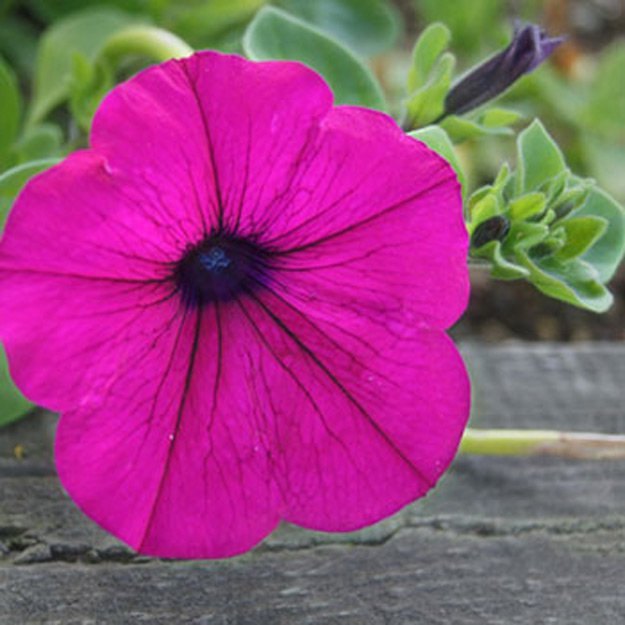
Equally hardy as they are precious, Petunias are a popular choice among beginner gardeners given their ease of care and adaptability to harsh climates. With a long bloom season, Petunias are most commonly found in violet, white or pink colors.
Sun Needs: Full Sun
Soil Needs: Well-drained
Zones: 8 – 11
Height: 0.66 – 1 foot
Blooms in: Early Summer – Mid‑Fall
Features: Attracts butterflies and hummingbirds
Pincushion Flower | Types of Flowers
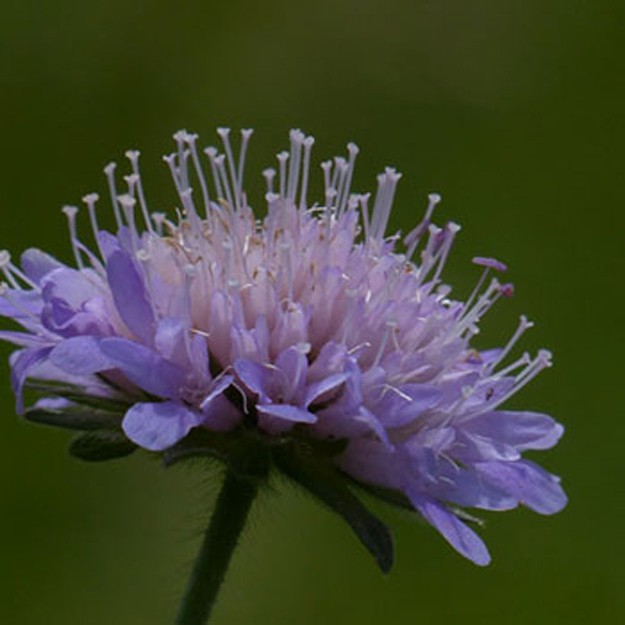
The Pincushion Flower gets its name from the long, grey stamens that resemble pins growing out of the cushion of the flowers. Coming in red, yellow, blue, violet, white and pink, Pincushion Flowers attract bees and hummingbirds.
Sun Needs: Full Sun
Soil Needs: Well-drained
Zones: 3 – 11
Height: 2 – 3 feet
Blooms in: Early Summer – Mid‑Fall
Features: Good for cut flowers
Polka Dot Plant | Types of Flowers
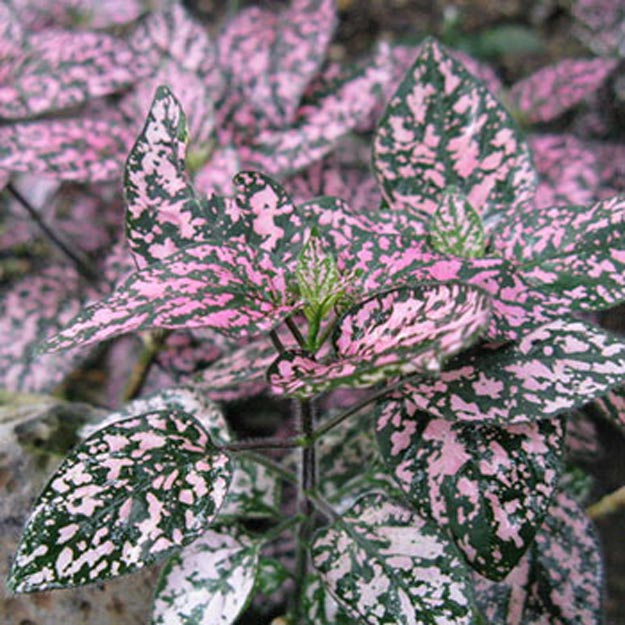
This spotted plant is equally as popular as an indoor plant, preferring filtered sun, well-drained soil and frequent misting to retain moisture. Outside, the Polka Dot Plant grows with vivid white, red or pink spots on its dark green leaves.
Sun Needs: Partial Shade
Soil Needs: Well-drained
Zones: 10 – 12
Height: 0.5 – 1.5 feet
Blooms in: Mid‑Summer
Features: Deer resistant
Primrose | Types of Flowers
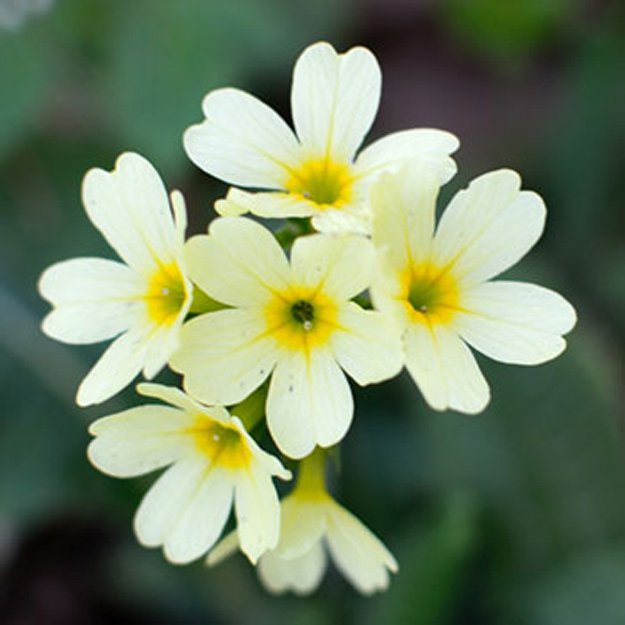
The cheery Primrose comes in many bright colors, including red, orange, yellow, blue, indigo, violet, white and pink. While popular for indoor containers, it isn't meant to be a long lasting houseplant, so be prepared for a short lifespan similar to Orchids or Poinsettias.
Sun Needs: Partial Shade
Soil Needs: Well-drained
Zones: 3 – 8
Height: 0.75 – 1.5 feet
Blooms in: Spring
Features: Non-invasive
Ranunculus | Types of Flowers
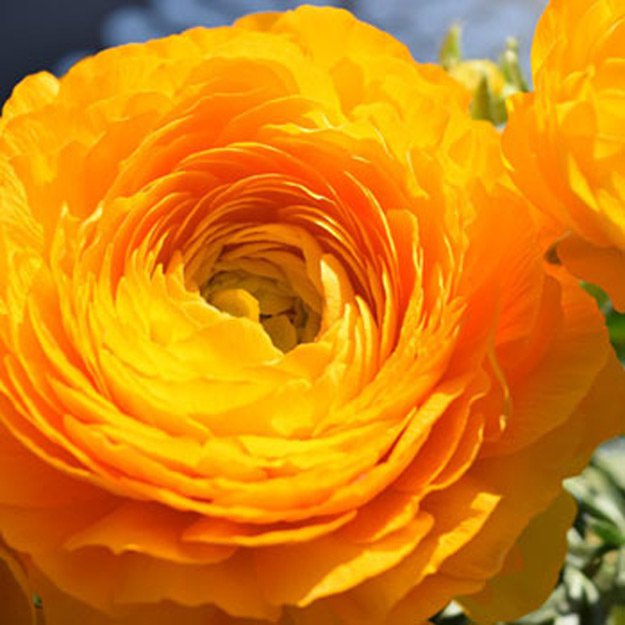
These lustrous flowers include more than 60 species, including the popular Buttercup. Other varieties come in red, white, purple, orange and pink colors, known for their bulbous, closely formed petals.
Sun Needs: Full Sun
Soil Needs: Well-drained
Zones: 4 – 7
Height: 0.5 – 3 feet
Blooms in: Early Spring – Mid‑Summer
Features: Good for cut flowers
Red Valerian | Types of Flowers
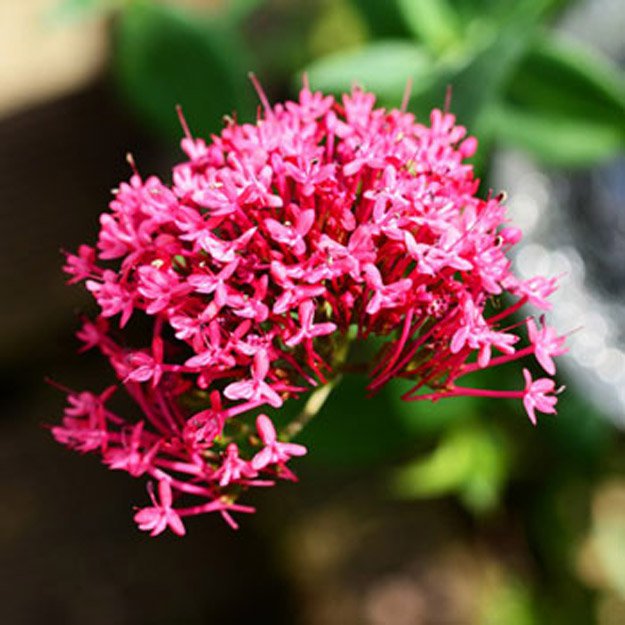
This low maintenance plant handles a variety of soil types and excels in full sun. Featuring dense, fragrant flowers, Red Valerian doesn't only come in red, but also blue, white and pink blooms.
Sun Needs: Full Sun
Soil Needs: Well-drained
Zones: 5 – 8
Height: 1.5 – 3 feet
Blooms in: Mid‑Summer – Late Summer
Features: Good for cut flowers
Rock Soapwort | Types of Flowers
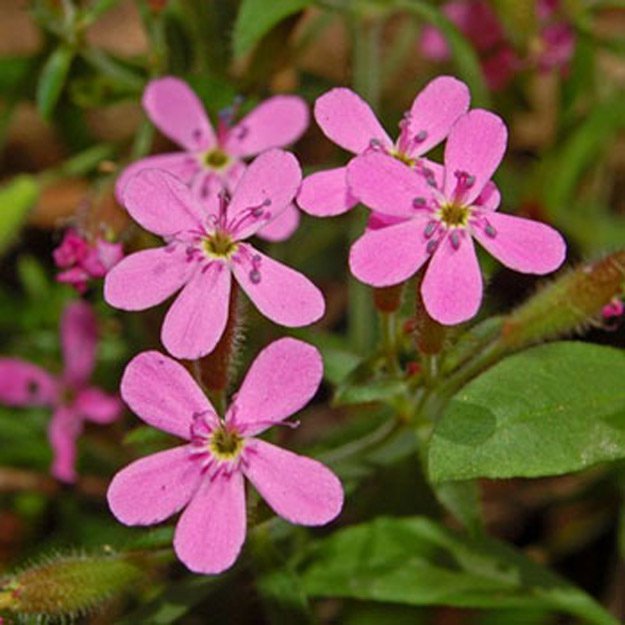
Used primarily as an ornamental plant in rock gardens, the Rock Soapwort features small blooms in shades of red and pink. Despite its tolerance of droughty and low fertile soil, it doesn't perform well in hot, humid weather.
Sun Needs: Full Sun
Soil Needs: Well-drained
Zones: 2 – 9
Height: 0.25 – 0.75 foot
Blooms in: Early Spring – Late Summer
Features: Deer resistant
Rose | Types of Flowers

With more than 100 species, the Rose is most commonly categorized for its trailing stems with sharp prickles. Roses vary in size and shape, but are vibrant in colors ranging from red, yellow, orange, blue, white and pink. Given the many species, Roses also hybridize easily, allowing you to explore the many varieties.
Sun Needs: Full Sun
Soil Needs: Well-drained
Zones: 2 – 11
Height: 1 – 10 feet
Blooms in: Late Spring – Early Fall
Features: Good for cut flowers
Rue | Types of Flowers
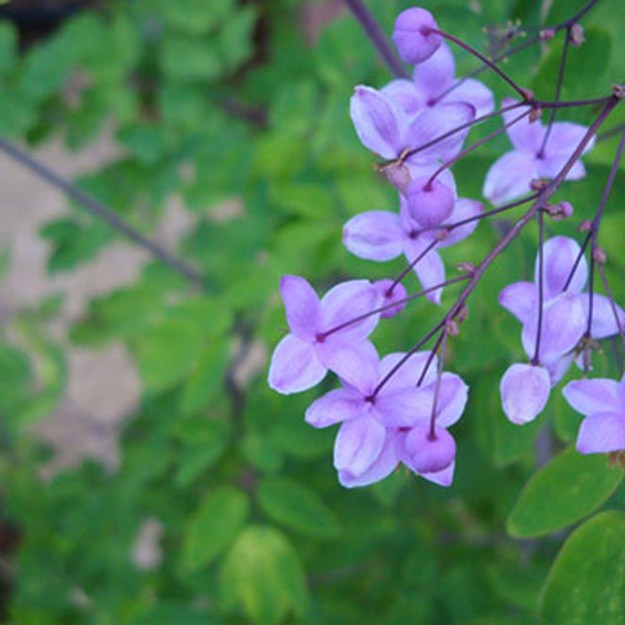
Rue is an evergreen plant often found as accent foliage or manicured into hedges. It tolerates just about any sun and soil type, but be aware that the leaves are toxic and can cause a skin rash if you make contact.
Sun Needs: Full Sun / Partial Shade
Soil Needs: Well-drained
Zones: 4 – 9
Height: 1.5 – 3 feet
Blooms in: Mid‑Summer – Late Summer
Features: Good for pressed flowers
Sanvitalia | Types of Flowers
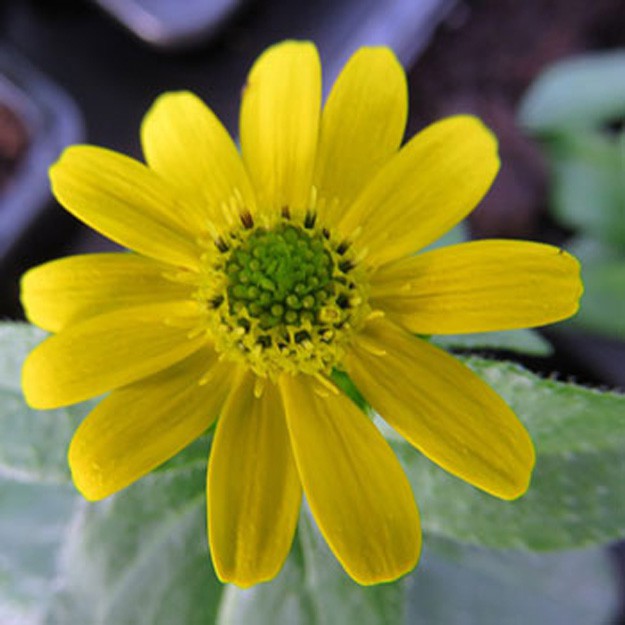
If you're a Sunflower fan seeking a shorter substitute, look no further. The small Sanvitalia resemble their taller cousins with dark brown centers and golden yellow petals. Add them to windowboxes or other outdoor containers where they can get a lot of sunlight.
Sun Needs: Full Sun
Soil Needs: Well-drained
Zones: 10 – 11
Height: 0.5 – 1 feet
Blooms in: Early Summer – Mid‑Fall
Features: Non-invasive
Scarlet Sage | Types of Flowers

Spotted easily with their flaming red flowers, newer Scarlet Sage plant hybrids can also come in pink, purple or white flowers. Easy to grow and generally low maintenance, it's a popular choice for public gardens and areas.
Sun Needs: Full Sun / Partial Shade
Soil Needs: Well-drained
Zones: 3 – 10
Height: 1 – 2 feet
Blooms in: Mid‑Summer – Mid‑Fall
Features: Deer resistant
Sea Lavender | Types of Flowers

Despite the name, Sea Lavender has no relation to the Lavender plant, but do have similar growing properties. Preferring full sun and can tolerate droughty soil, Sea Lavender comes in shades of blue, violet and pink.
Sun Needs: Full Sun
Soil Needs: Well-drained
Zones: 3 – 9
Height: 1.5 – 2 feet
Blooms in: Mid‑Summer – Late Summer
Features: Good for cut flowers
Sea Thrift | Types of Flowers

Small and clustered, the Sea Thrift comes in red, violet, white and pink colors. Preferring full sun and sandy soil, do not plant in wet or humid conditions so as to avoid plant rot.
Sun Needs: Full Sun
Soil Needs: Well-drained
Zones: 4 – 8
Height: 0.5 – 1 foot
Blooms in: Late Spring – Early Summer
Features: Non-invasive
Shirley Poppy | Types of Flowers
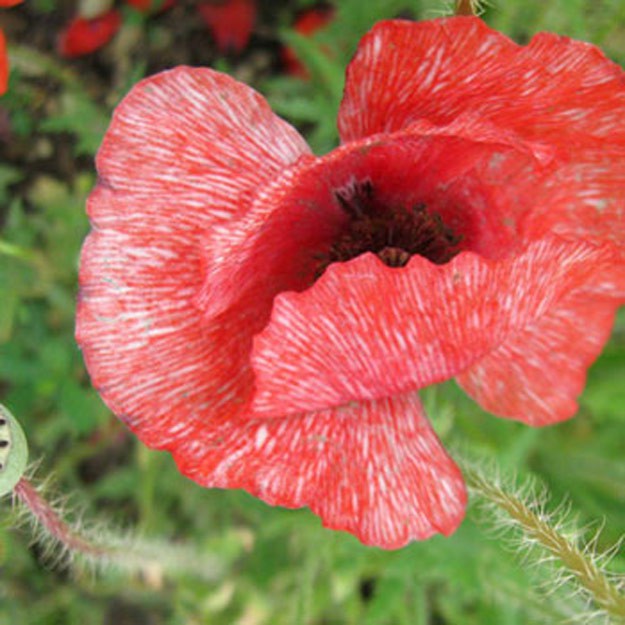
The ruffled, delicate flowers of the Shirley Poppy come in a range of red, orange, yellow, violet, white and pink hues. You can cut Shirley Poppies to bring inside, but they must be carefully prepped by sticking the cut stem in boiling water for 30 seconds in order to close the cut.
Sun Needs: Full Sun
Soil Needs: Well-drained
Zones: 3 – 9
Height: 2 – 3 feet
Blooms in: Late Spring – Early Summer
Features: Good for cut flowers
Shooting Star | Types of Flowers
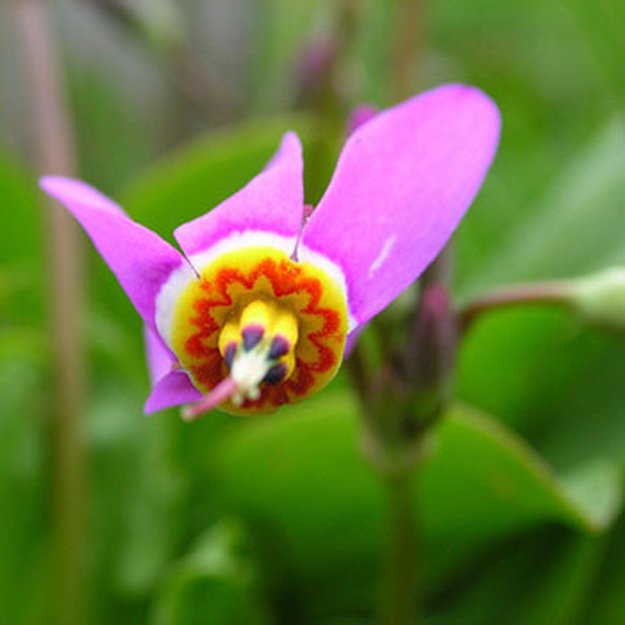
Resembling a star shooting through outer space, this dazzling wildflower prefers moist soil and partial to full shade. In addition to the popular white, Shooting Stars come in violet and pink shades too.
Sun Needs: Partial Shade / Full Shade
Soil Needs: Well-drained
Zones: 4 – 8
Height: 1 – 2 feet
Blooms in: Late Spring – Early Summer
Features: Non-invasive
Silvermound | Types of Flowers
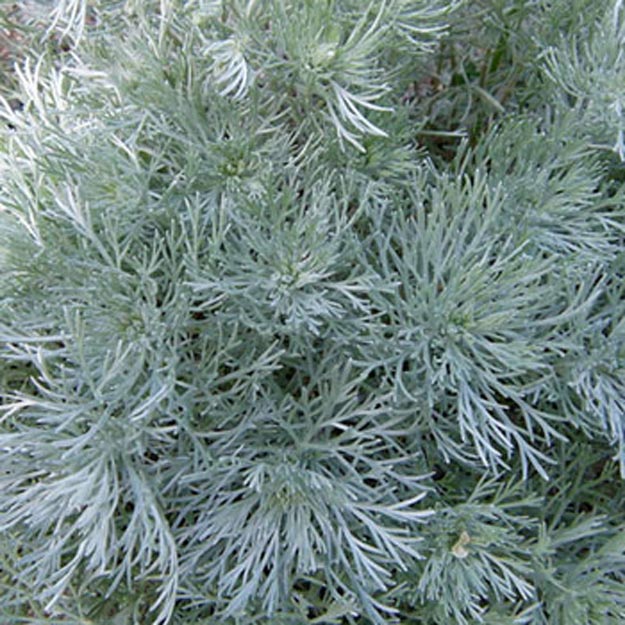
Its name is not misleading, the Sivlermound's fine silver leaves and dense clump make for a showy addition to your garden. While small yellow flowers are known to bloom, they're often removed to keep its silvery-green foliage.
Sun Needs: Full Sun / Partial Shade
Soil Needs: Well-drained
Zones: 4 – 8
Height: 1 – 2 feet
Blooms in: Mid‑Summer
Features: Tolerates heat
Skunk Cabbage | Types of Flowers
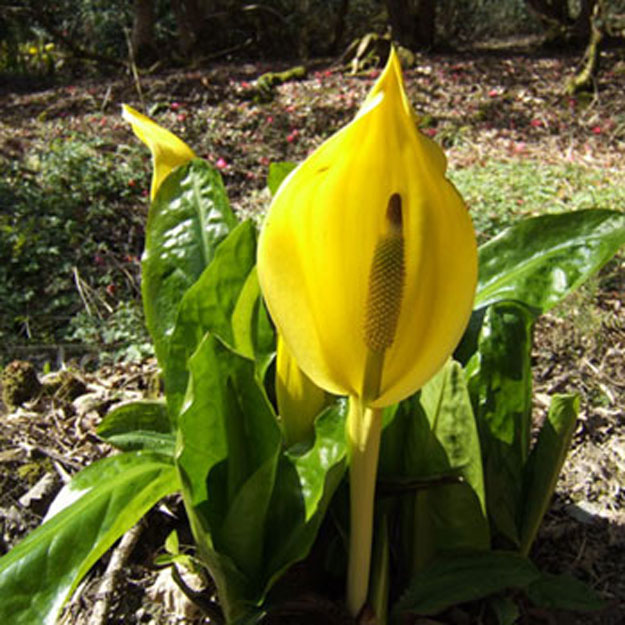
If you guessed the Skunk Cabbage gives off a less than favorable scent, you guessed right! It blooms very early in the season—as early as late January—but should be grown further from the home if you're concerned about the smell.
Sun Needs: Full Sun / Partial Shade
Soil Needs: Damp
Zones: 4 – 9
Height: 1 – 2.5 feet
Blooms in: Early Spring – Winter
Features: Non-invasive
Snapdragon | Types of Flowers
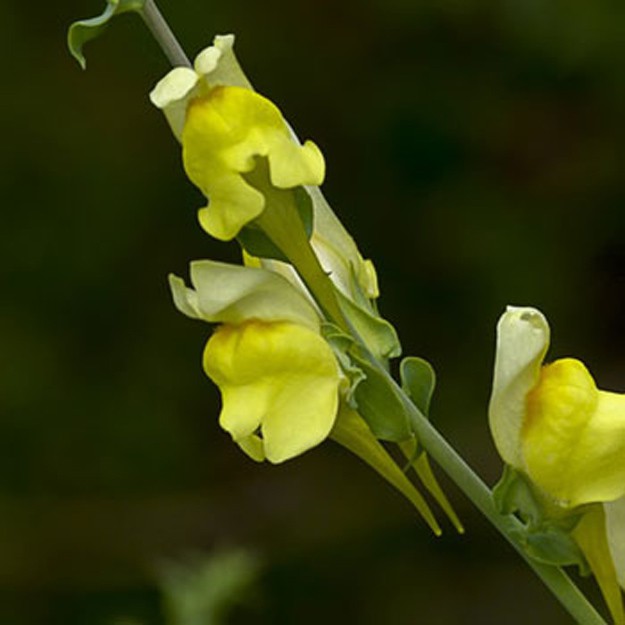
These easy to grow flowers are known for their mouth-like petals that can open and close by pressing gently between your fingers. Enjoy the Snapdragon while its around, as it has a short lifespan, but make for great bouquets and indoor arrangements.
Sun Needs: Full Sun
Soil Needs: Well-drained
Zones: 9 – 10
Height: 1 – 3.5 feet
Blooms in: Mid‑Summer – Mid‑Fall
Features: Good for cut flowers
Snow in Summer | Types of Flowers

The Snow in Summer is exactly that—dotted star-like white flowers that bloom even in sandy, drought prone soils. Spread it along rock gardens and xeriscapes to add as a simple backdrop.
Sun Needs: Full Sun
Soil Needs: Well-drained
Zones: 3 – 7
Height: 0.5 – 1 foot
Blooms in: Late Spring – Early Summer
Features: Deer resistant
Snowdrop | Types of Flowers
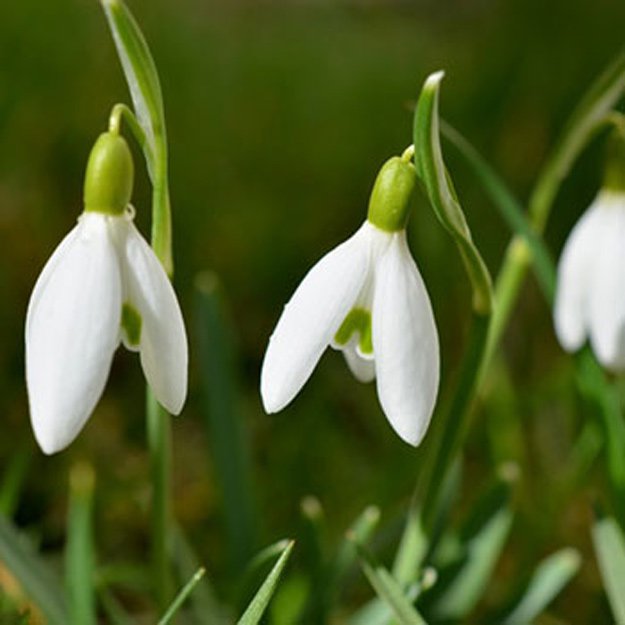
Resembling little droplets of snow, this early flowering bulb features delicate, pure white blooms. It performs well in containers, indoors or outdoors, as long as its kept in cool and moist.
Sun Needs: Partial Shade
Soil Needs: Well-drained
Zones: 3 – 9
Height: 0.25 – 0.5 feet
Blooms in: Early Spring
Features: Non-invasive
Solomon's Seal | Types of Flowers

Coming from the Greek word for “many knees,” the multi-jointed Solomon's Seal is easy to care for. If you live in a cool, moist region, you can enjoy the rows of white bell flowers that hang from its stem.
Sun Needs: Full Sun / Partial Shade/Full Shade
Soil Needs: Well-drained
Zones: 3 – 9
Height: 1 – 7 feet
Blooms in: Mid-Spring – Late Spring
Features: Deer resistant
Spring Snowflake | Types of Flowers
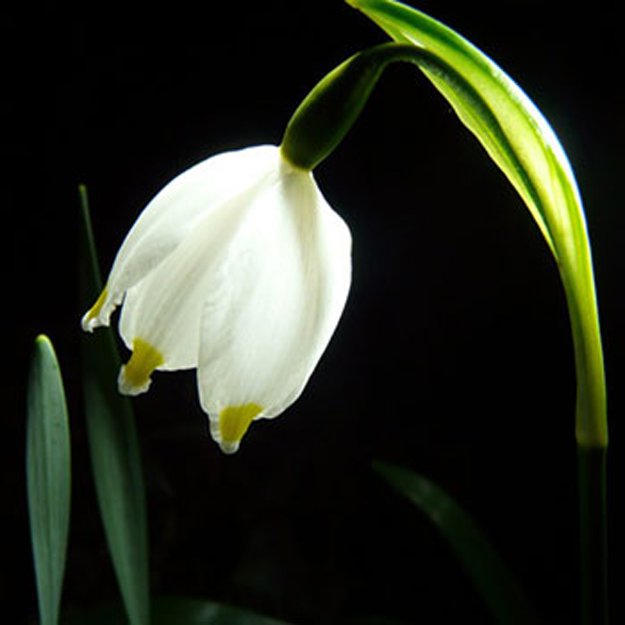
These small, bill-like flowers prefer rich, well-drained soil and partial shade. Growing upright with a dainty bloom, Spring Snowflakes work for outdoor containers as well as indoor houseplants.
Sun Needs: Full Sun / Partial Shade
Soil Needs: Well-drained
Zones: 4 – 8
Height: 0.25 – 1 foot
Blooms in: Early Spring
Features: Non-invasive
Summer Savory | Types of Flowers

Similar in taste to oregano and used as a popular herb in French cuisine, the Summer Savory is also good for gardens for their ease of care and hardiness. When left to bloom, it'll feature small white, violet or pink flowers that can be cut and dried for display.
Sun Needs: Full Sun
Soil Needs: Well-drained
Zones: 5 – 8
Height: 1 – 1.5 feet
Blooms in: Mid‑Summer – Late Summer
Features: Good for pressed flowers
Sunflower | Types of Flowers
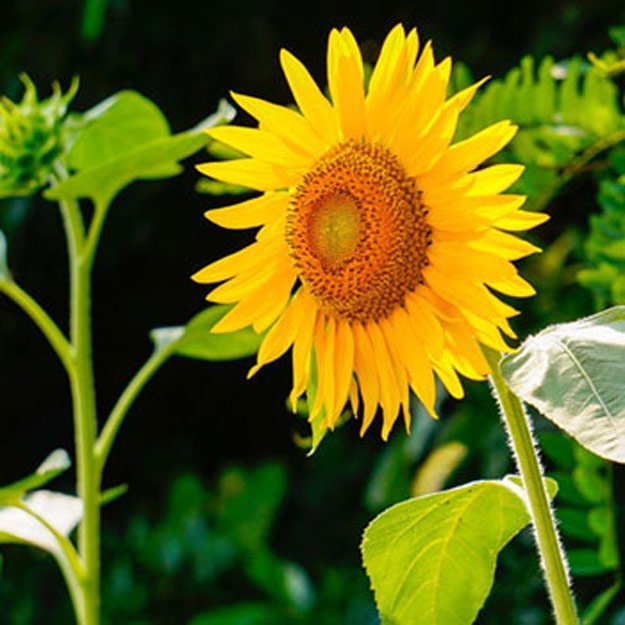
Known for their tall stalks and bright yellow petals, the Sunflower is an all time classic wildflower. They most commonly come in yellow, but Sunflowers can also be found in rich orange and red hues.
Sun Needs: Full Sun
Soil Needs: Well-drained
Zones: 3 – 10
Height: 1 – 3 feet
Blooms in: Early Summer – Early Fall
Features: Good for cut flowers
Sweet Alyssum | Types of Flowers

The genus name for Sweet Alyssum comes from the Greek word “small pod,” referring to the shape of its fruits. Its flowers come in violet, white or pink hues and its creeping habit make it useful for filing gaps in pathways or stone walls.
Sun Needs: Full Sun / Partial Shade
Soil Needs: Damp
Zones: 7 – 11
Height: 0.2 – 1 foot
Blooms in: Late Spring – Mid‑Fall
Features: Attracts butterflies
Sweet Woodruff | Types of Flowers
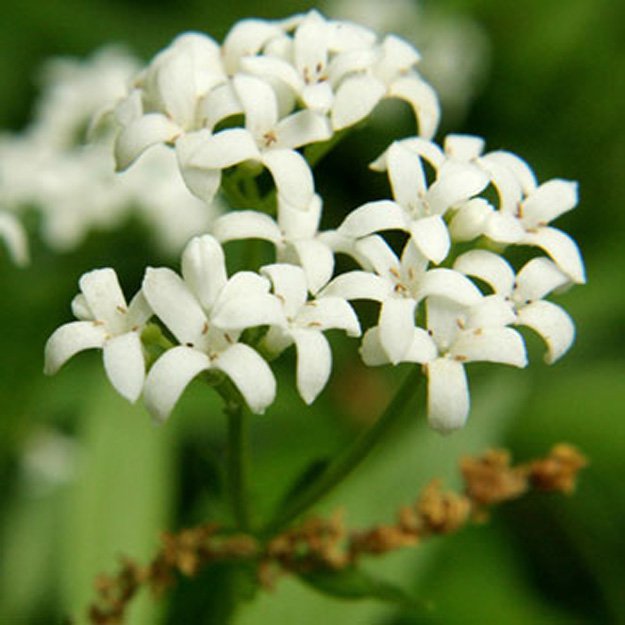
The Sweet Woodruff gives of a slight fragrance that is less sweet and more fresh, similar to freshly cut grass. It spreads easily, but isn't as aggressive as other quick growing plants and other flowers can grow through its foliage.
Sun Needs: Partial Shade / Full Shade
Soil Needs: Well-drained
Zones: 5 – 8
Height: 0.5 – 1 foot
Blooms in: Late Spring – Mid‑Summer
Features: Deer resistant
Tansy | Types of Flowers
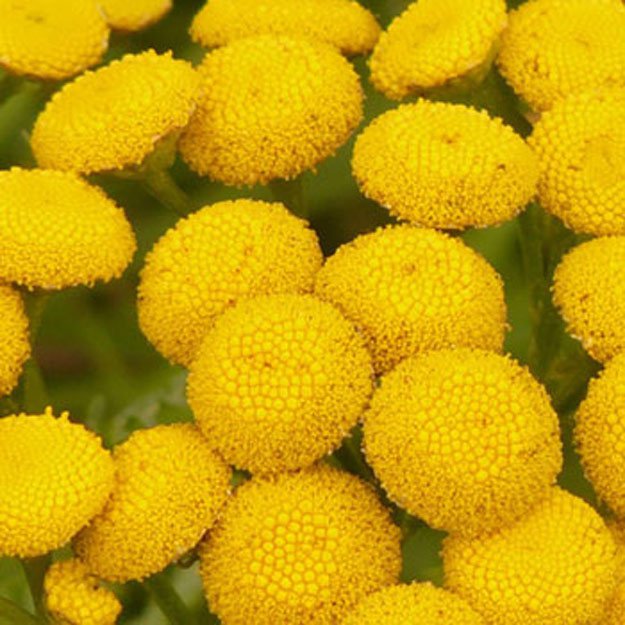
Also know as Golden Buttons, the Tansy features bright yellow, button-shaped flower heads that dot the tall, slender stems. Commonly found in cottage gardens and meadows, the Tansy is easy to care for and can spread if not maintained.
Sun Needs: Full Sun
Soil Needs: Well-drained
Zones: 4 – 8
Height: 2 – 4 feet
Blooms in: Mid‑Summer – Late Summer
Features: Good for pressed flowers
Thunbergia | Types of Flowers
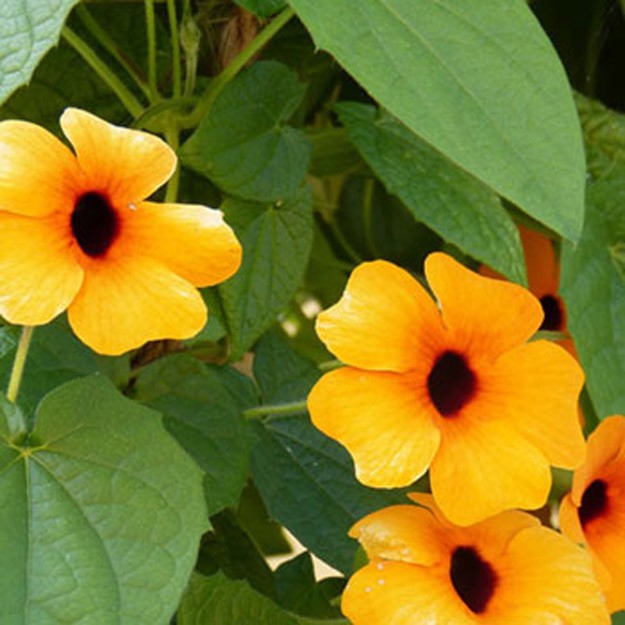
Similar in shape to a Blackeyed Susan, the Thunbergia comes in orange, yellow and white colors. They perform best when shaded from intense afternoon sun and can also make great indoor plants.
Sun Needs: Full Sun
Soil Needs: Well-drained
Zones: 9 – 10
Height: 5 – 8 feet
Blooms in: Mid‑Summer – Mid‑Fall
Features: Non-invasive
Tithonia | Types of Flowers

The tall, colorful Tithonia is similar to the Sunflower, but can thrive in poorer soil conditions and intense heat. Tithonias attract butterflies and hummingbirds, but will really shine once cut and displayed in a bouquet.
Sun Needs: Full Sun
Soil Needs: Well-drained
Zones: 10 – 11
Height: 3 – 6 feet
Blooms in: Mid‑Summer – Mid‑Fall
Features: Good for cut flowers
Torenia | Types of Flowers
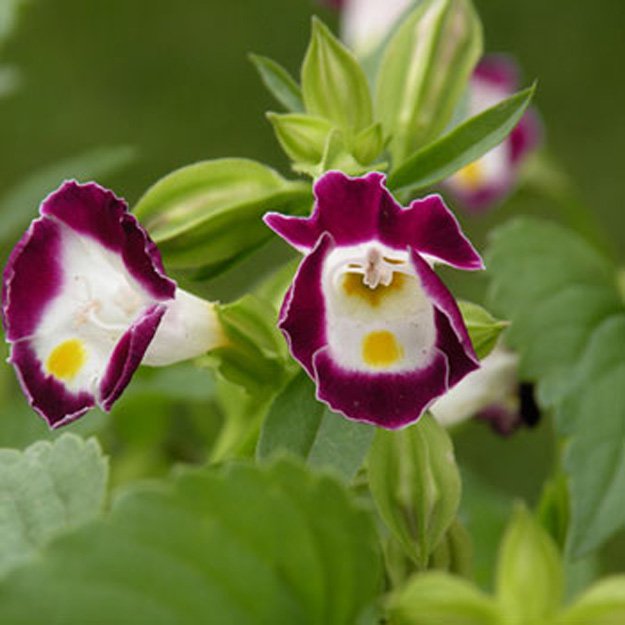
Also called the Wishbone Flower, the Torenia gets its nickname from the two stamens that meet at the top to form a wishbone shape. Coming in yellow, violet, white and pink blooms, it also makes for a good houseplant.
Sun Needs: Partial Shade
Soil Needs: Well-drained
Zones: 2 – 11
Height: 0.66 – 1 foot
Blooms in: Mid‑Summer – Mid‑Fall
Features: Attracts hummingbirds
Trillium | Types of Flowers
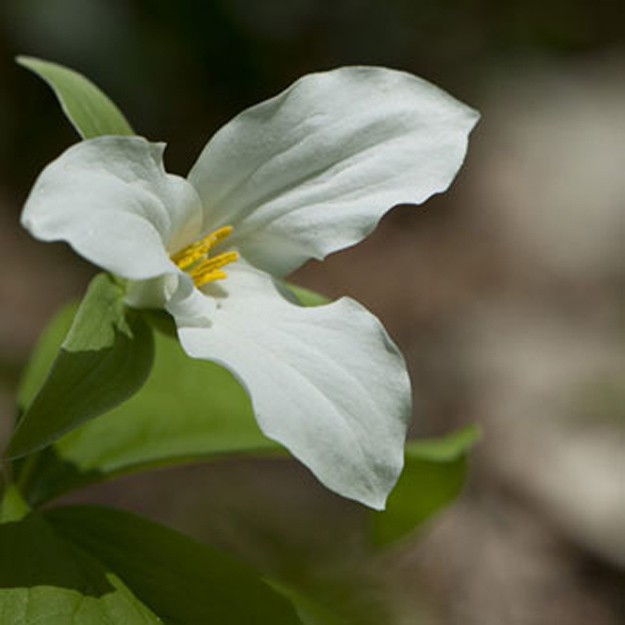
Add this perennial to a woodland garden for a naturalized effect. With trumpet-like blooms and dark green foliage, the Trillium can be a challenge to cultivate and care for.
Sun Needs: Partial Shade
Soil Needs: Well-drained
Zones: 3 – 9
Height: 1 – 1.5 feet
Blooms in: Late Spring
Features: Non-invasive
Tulip | Types of Flowers
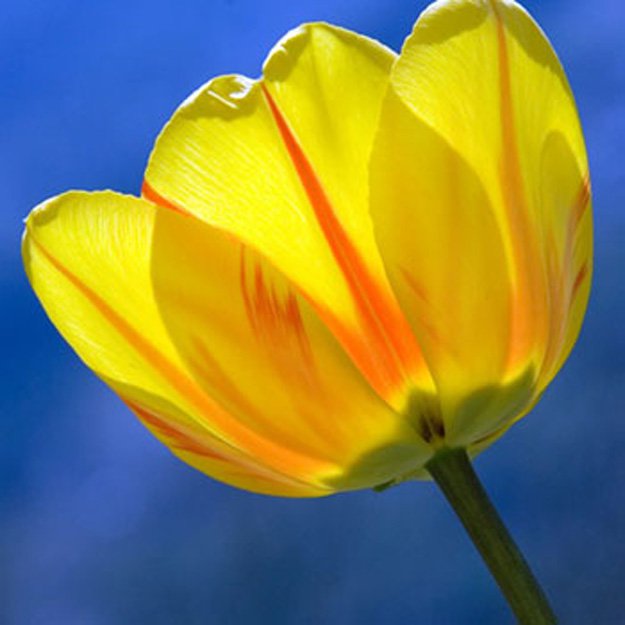
With about 75 species, the Tulip is known for its bright, bulbous flowers and elegant stems. Producing one flower per stem, Tulips come in a dazzling array of colors from reds to pinks to violets and make for gorgeous bouquets inside your home.
Sun Needs: Full Sun
Soil Needs: Well-drained
Zones: 4 – 8
Height: 0.5 – 2.5 feet
Blooms in: Spring
Features: Good for cut flowers
Verbena | Types of Flowers
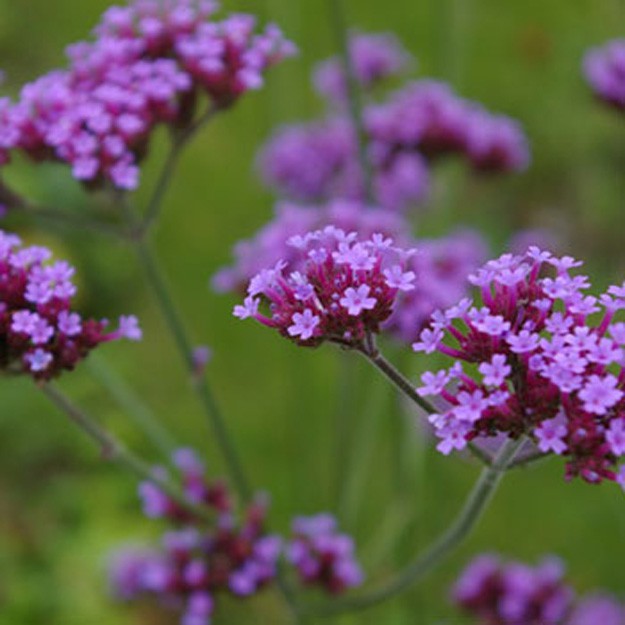
With easy maintenance and a selection of bright colors, the Verbena is a classic outdoor or hanging container plant. It attracts butterflies and hummingbirds, in addition to making for a beautiful cut arrangement to bring indoors.
Sun Needs: Full Sun
Soil Needs: Well-drained
Zones: 7 – 9
Height: 0.3 – 1.5 feet
Blooms in: Mid‑Summer – Mid‑Fall
Features: Good for cut flowers
Violet | Types of Flowers
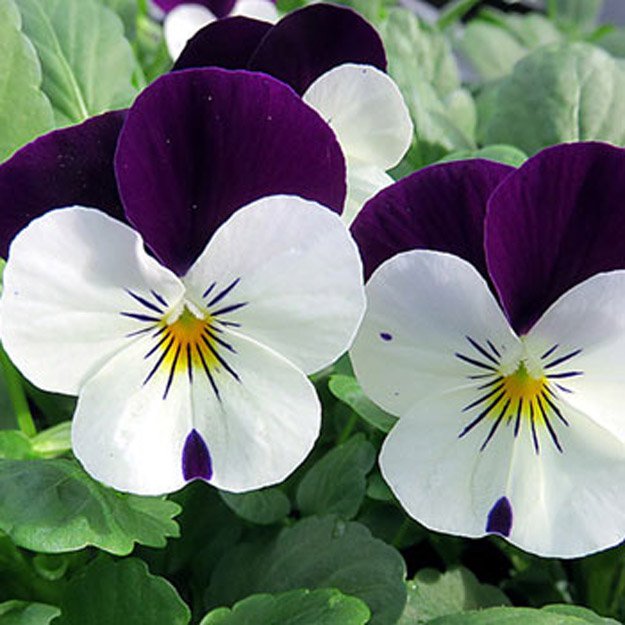
The Violet is an easy to maintain perennial with blooms ranging from pale violet to peach. Violets will blanket the ground with its foliage and often bloom once in the spring or summer, then re-bloom in early fall.
Sun Needs: Full Sun / Partial Shade
Soil Needs: Well-drained
Zones: 3 – 9
Height: 0.25 – 1 foot
Blooms in: Early Spring – Early Fall
Features: Non-invasive
Virginia Bluebell | Types of Flowers

These dainty, horn-like flowers grow best in moist, partly shady gardens. The Virginia Bluebell mostly attracts butterflies, but you will get the occasional bumblebee if they can hover long enough to reach nectar.
Sun Needs: Partial Shade
Soil Needs: Damp
Zones: 4 – 9
Height: 1 – 1.5 feet
Blooms in: Mid-Spring – Late Spring
Features: Non-invasive
Wild Senna | Types of Flowers
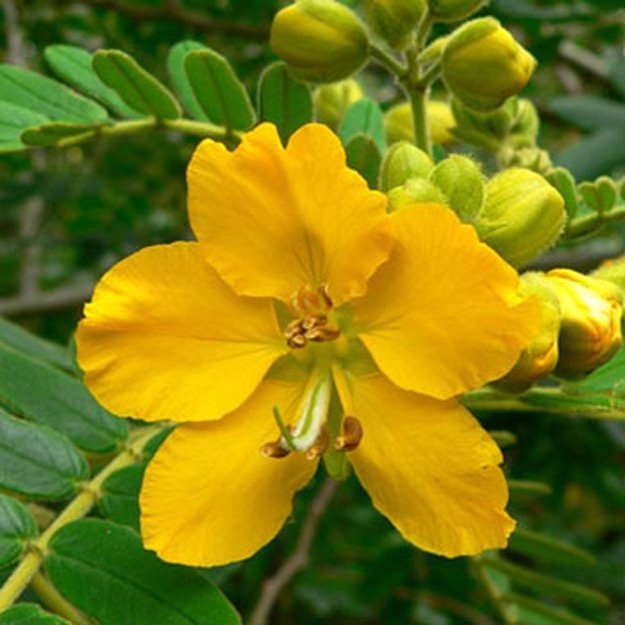
If your garden soil has clay, the Wild Senna is a perfect fit. Growing up to 4 feet tall, Wild Senna also attracts bees, butterflies and hummingbirds. Caterpillars are also known to make Wild Senna their home before they turn into butterflies!
Sun Needs: Full Sun
Soil Needs: Well-drained
Zones: 4 – 7
Height: 2 – 4 feet
Blooms in: Mid‑Summer – Late Summer
Features: Attracts butterflies and hummingbirds
Windflower | Types of Flowers
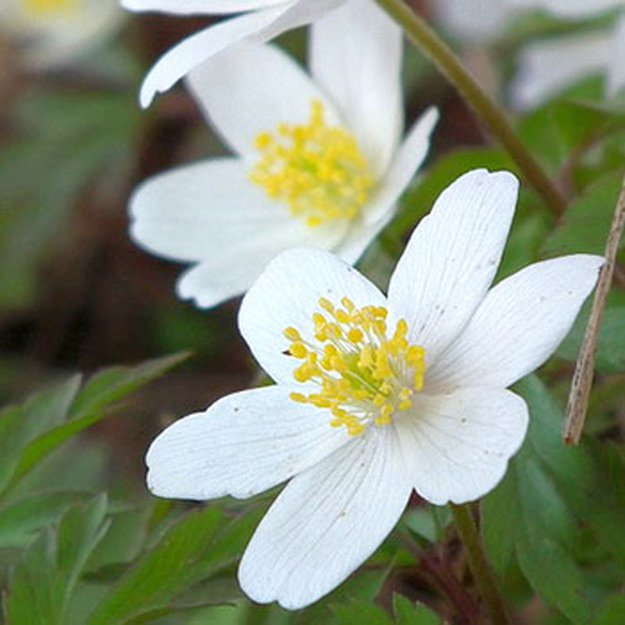
Similar in shape and size to the Anemone, Windflowers come in blue, indigo, violet, white and pink colors. It's daisy-like flowers bloom in early spring, a time when little else is in season.
Sun Needs: Full Sun / Partial Shade
Soil Needs: Well-drained
Zones: 4 – 8
Height: 0.25 – 0.5 foot
Blooms in: Early Spring
Features: Deer resistant
Yarrow | Types of Flowers

The finely-textured Yarrow comes in an array of colors including red, yellow, white and pink. It also has a pleasing scent that resembles chamomile and makes for beautiful dried flowers for display.
Sun Needs: Full Sun
Soil Needs: Well-drained
Zones: 3 – 10
Height: 1.3 – 3 feet
Blooms in: Mid‑Summer
Features: Deer resistant
Yellow Archangel | Types of Flowers
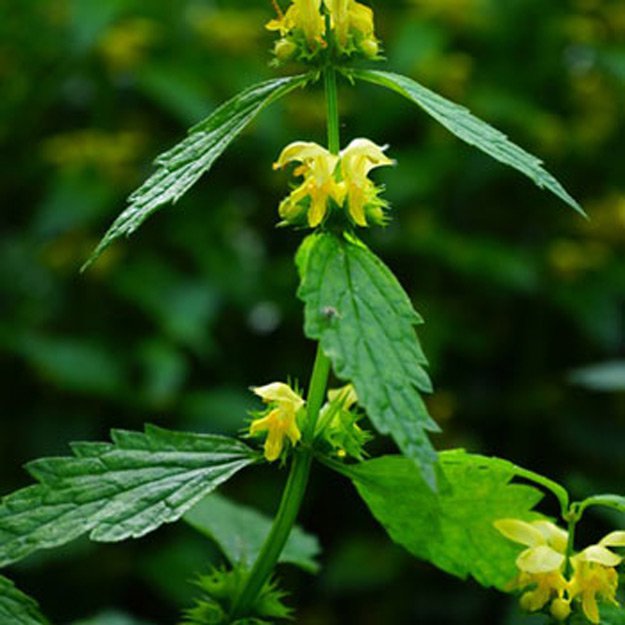
The shade-loving Yellow Archangel can grow quickly and aggressively if left unmaintained. Also, be careful not to crush this plant while growing, as the leaves can give off a faint odor.
Sun Needs: Partial Shade / Full Shade
Soil Needs: Well-drained
Zones: 3 – 9
Height: 1 – 2 feet
Blooms in: Late Spring – Early Summer
Features: Deer resistant
Yellow Loosestrife | Types of Flowers

The Yellow Loosestrife loves moisture and damp soil, but be careful not to let this plant go ignored. It's known to self seed and spread rapidly. When maintained, Yellow Loosestrife adds a bright pop of yellow and grows as tall stalks.
Sun Needs: Full Sun / Partial Shade
Soil Needs: Damp
Zones: 3 – 9
Height: 1.5 – 3 feet
Blooms in: Mid‑Summer – Late Summer
Features: Good for cut flowers
Zinnia | Types of Flowers
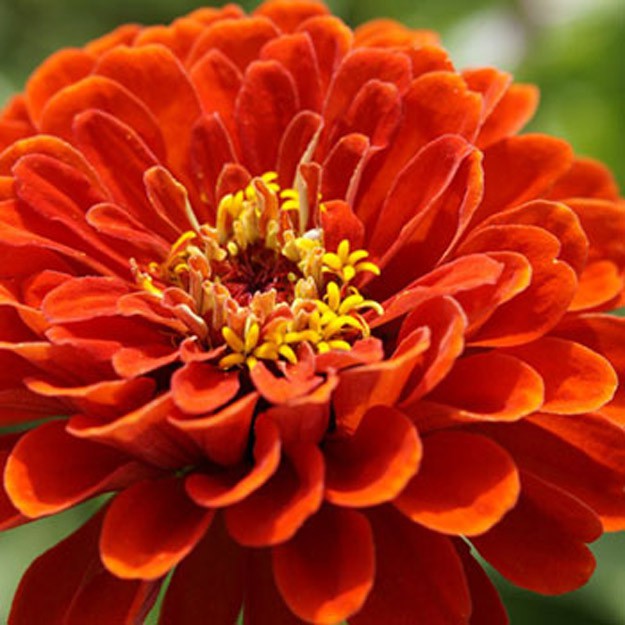
The classic Zinnia is easy to grow and provides vibrant red, orange, yellow, violet white or pink blooms. Lasting from the summer into mid-fall, Zinnias attract butterflies and hummingbirds.
Sun Needs: Full Sun
Soil Needs: Well-drained
Zones: 2 – 11
Height: 0.5 – 2.5 feet
Blooms in: Mid‑Summer – Mid‑Fall
Features: Good for cut flowers
Did you know there are over 400,000 plant species across the world? In other words, that’s more than the number of bird, butterfly and bee species, combined! While many flowers grow naturally in forests, grasslands, deserts and tundras, growing your own garden or picking up a bouquet is a great way to create your own oasis.
Does this make you more familiar with the common types of flowers in the U.S.? Let us know below in the comments!
Next:
How to Press Flowers – Different Methods for Perfect Dried Petals Every Time
Edible Flowers | 5 Flowers You Can Eat!
25 Types of Flowers to Plant for Summer
This post is courtesy of Pro Flowers, and shared with permission – Read Original Post Here
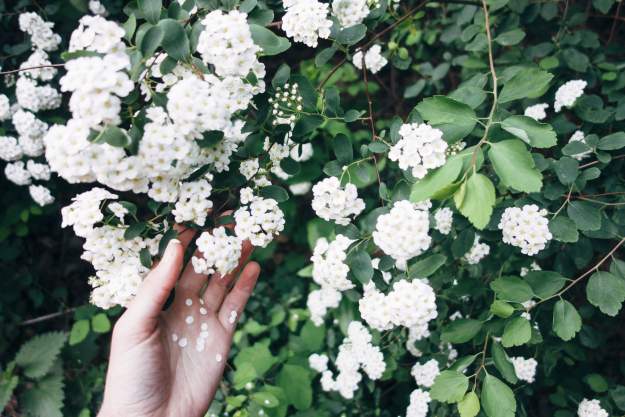


[…] 1. Create a Growth Calendar for Your Plants […]